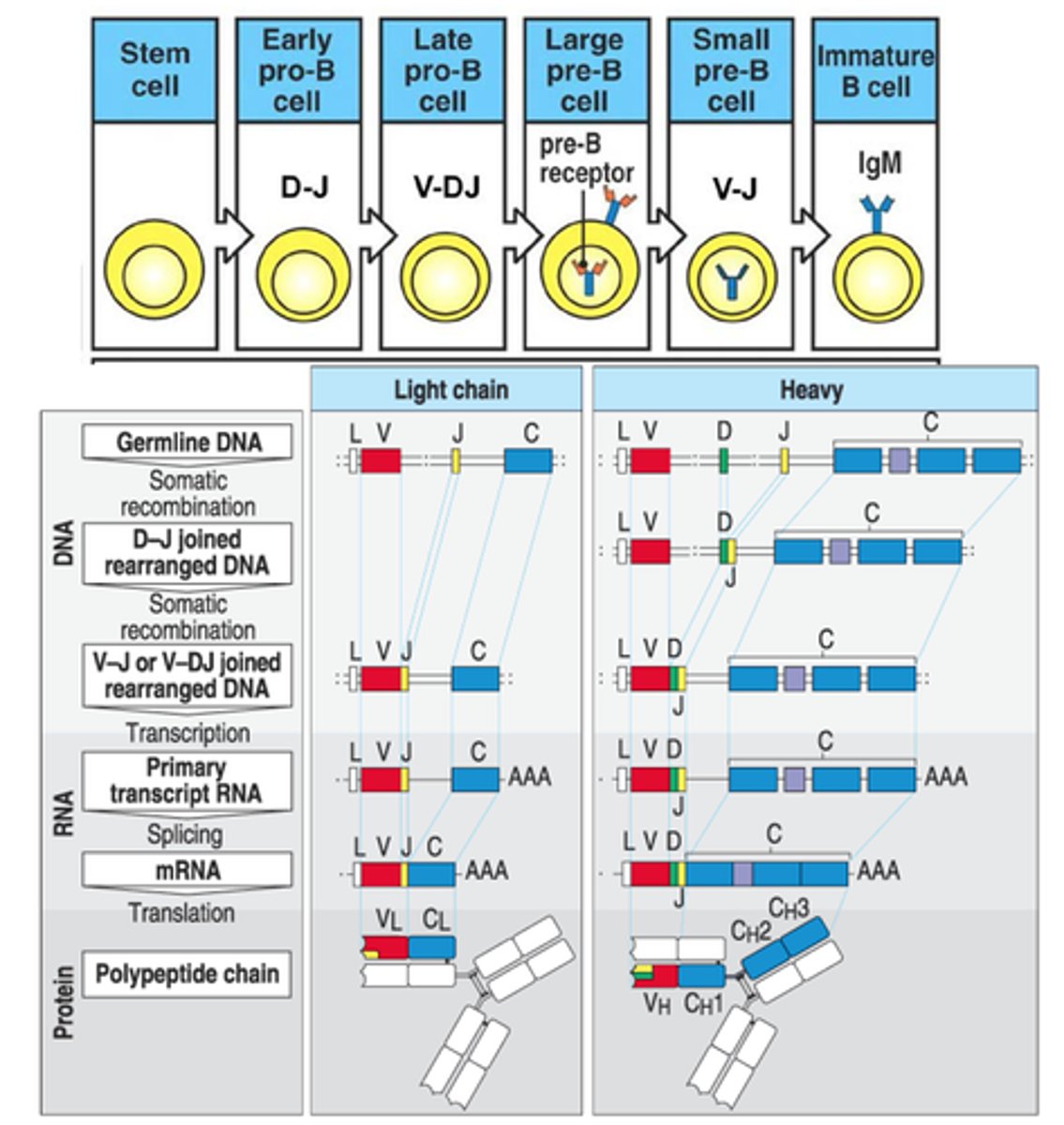S9 Adaptive Immune Responses
1/31
There's no tags or description
Looks like no tags are added yet.
Name | Mastery | Learn | Test | Matching | Spaced |
|---|
No study sessions yet.
32 Terms
adjuvant
a substance that enhances the body's immune response to an antigen (typically by prolonging antigen presence, activate dendritic cells, or trigger TLRs)
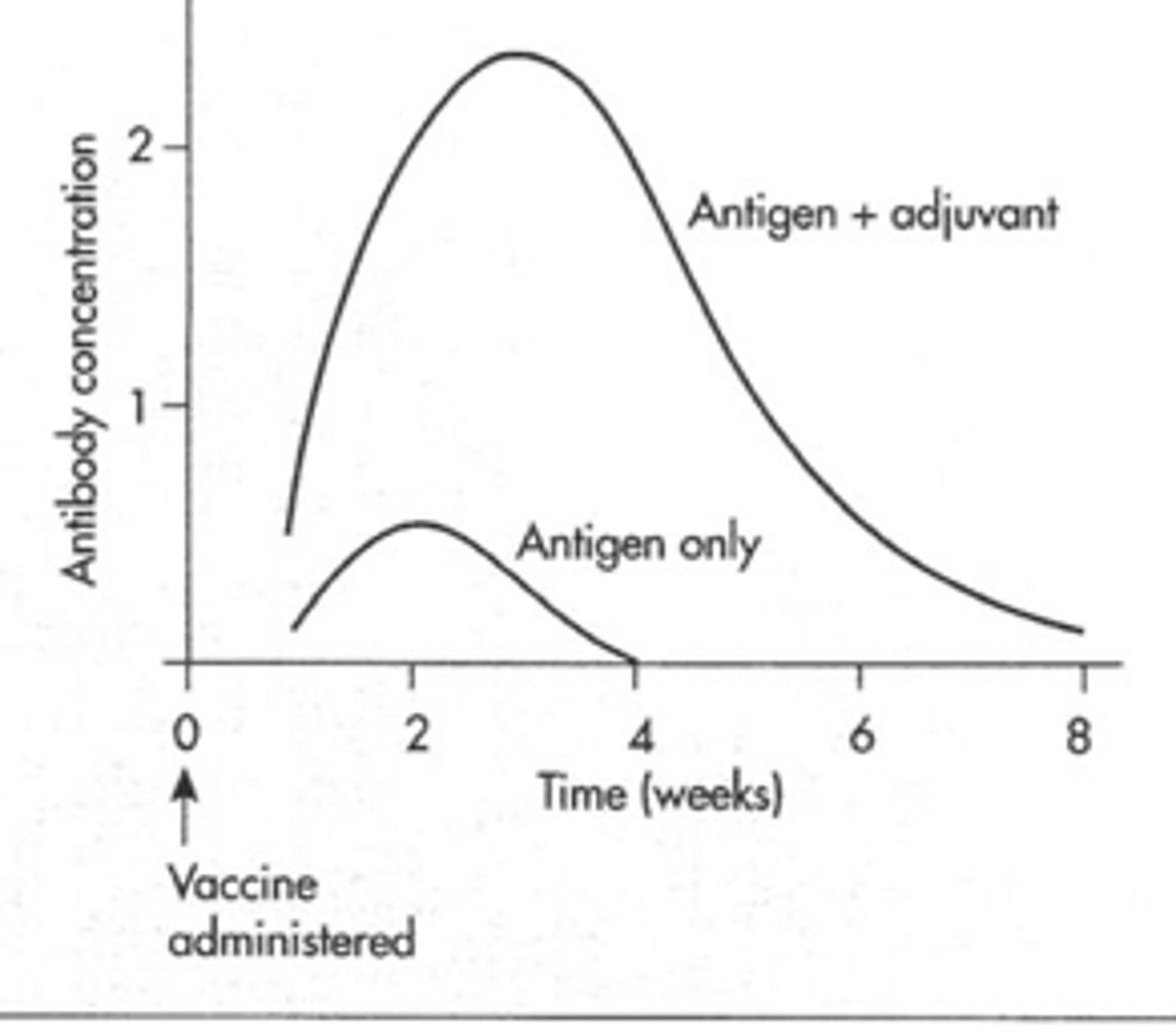
affinity maturation
The increase in affinity of the antigen-binding sites of antibodies for the antigen that occurs during the course of an adaptive immune response due to selective pressure as antigen levels decrease and somatic mutations occur.
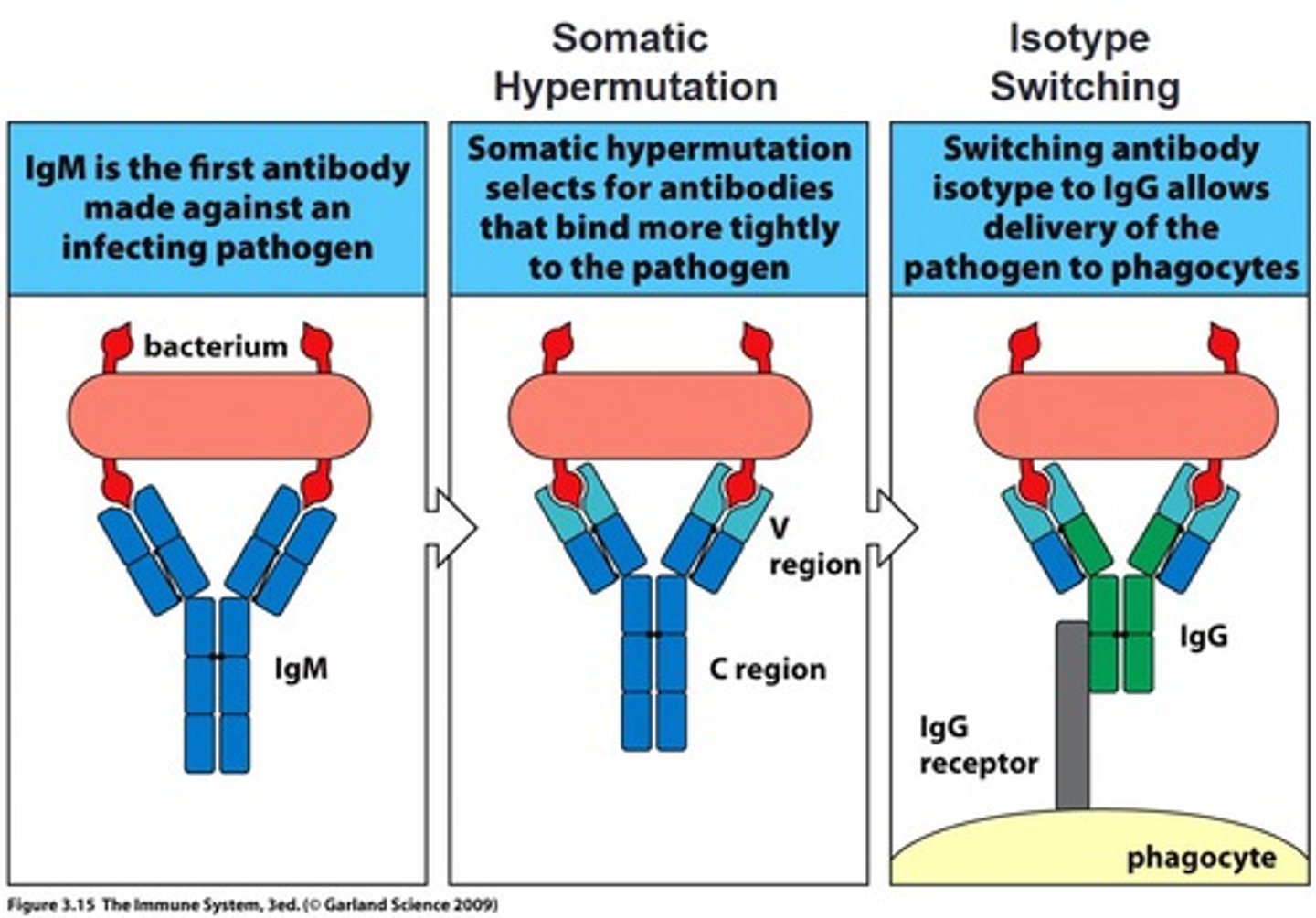
antigen
a toxin or other foreign substance that induces an immune response in the body, especially the production of antibodies.
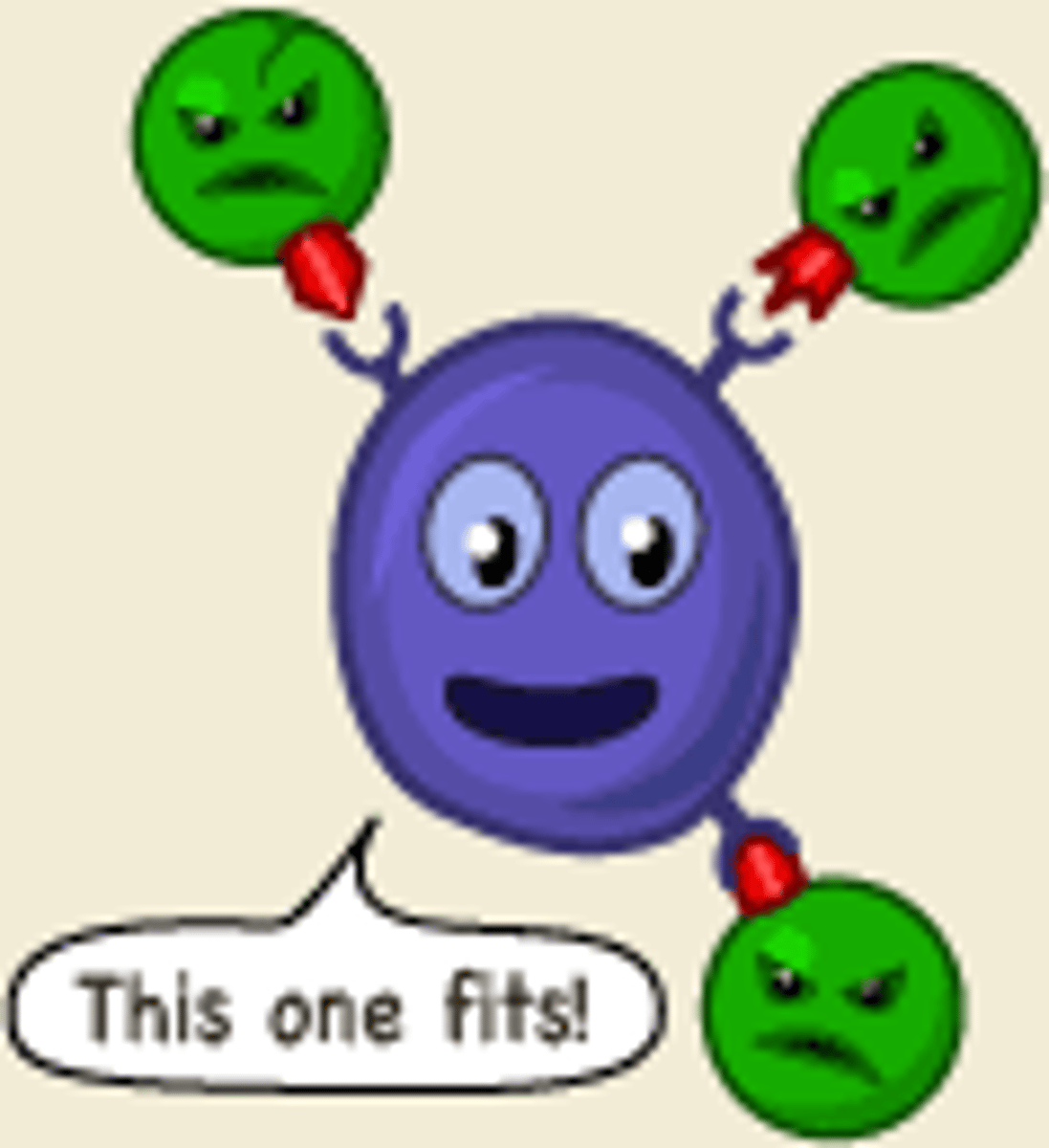
autoimmune
immune reaction directed against a person's own tissue (e.g. MS, Lupus)
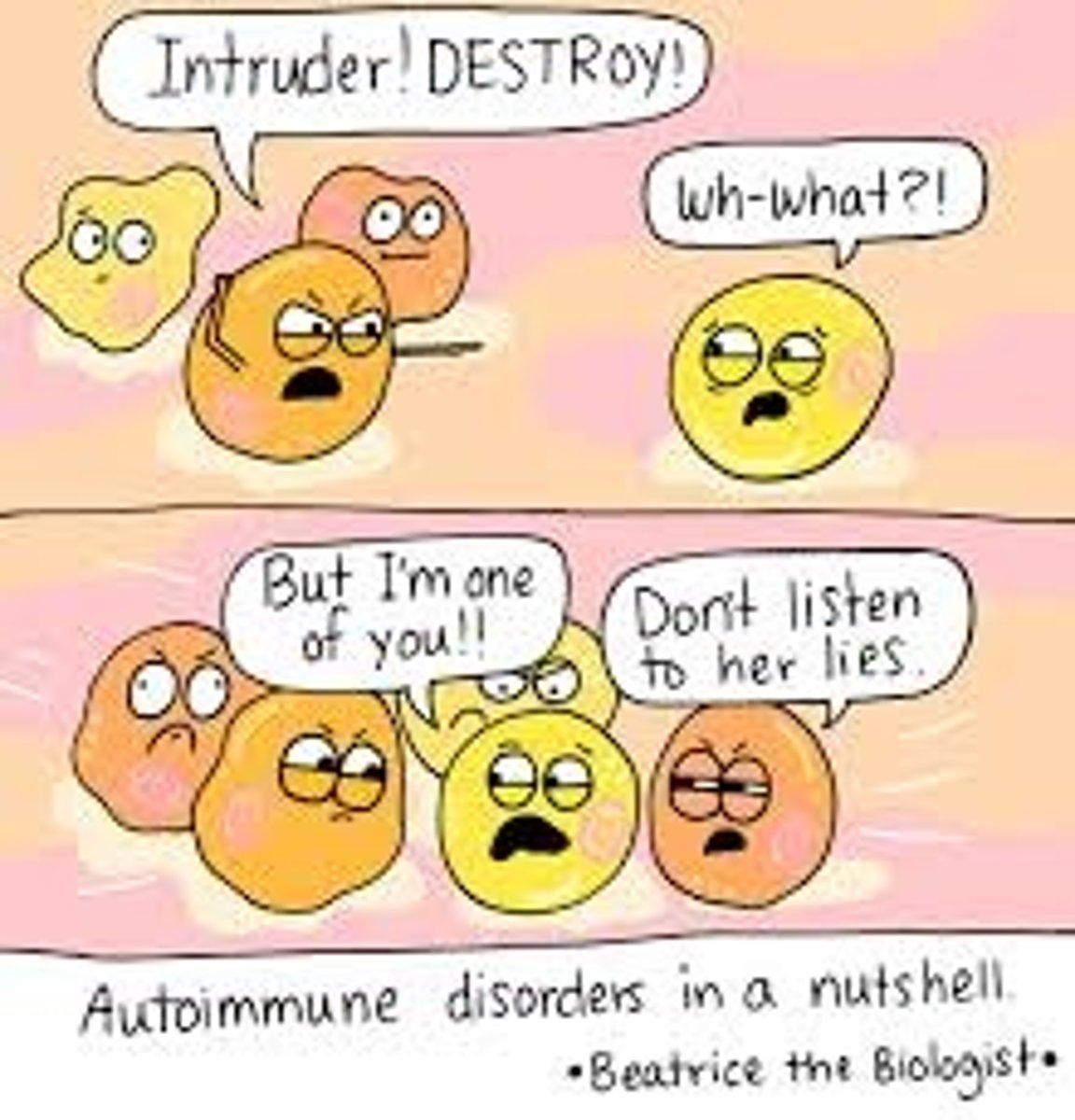
carrier
The protein that binds a small antigen (e.g. hapten) binds
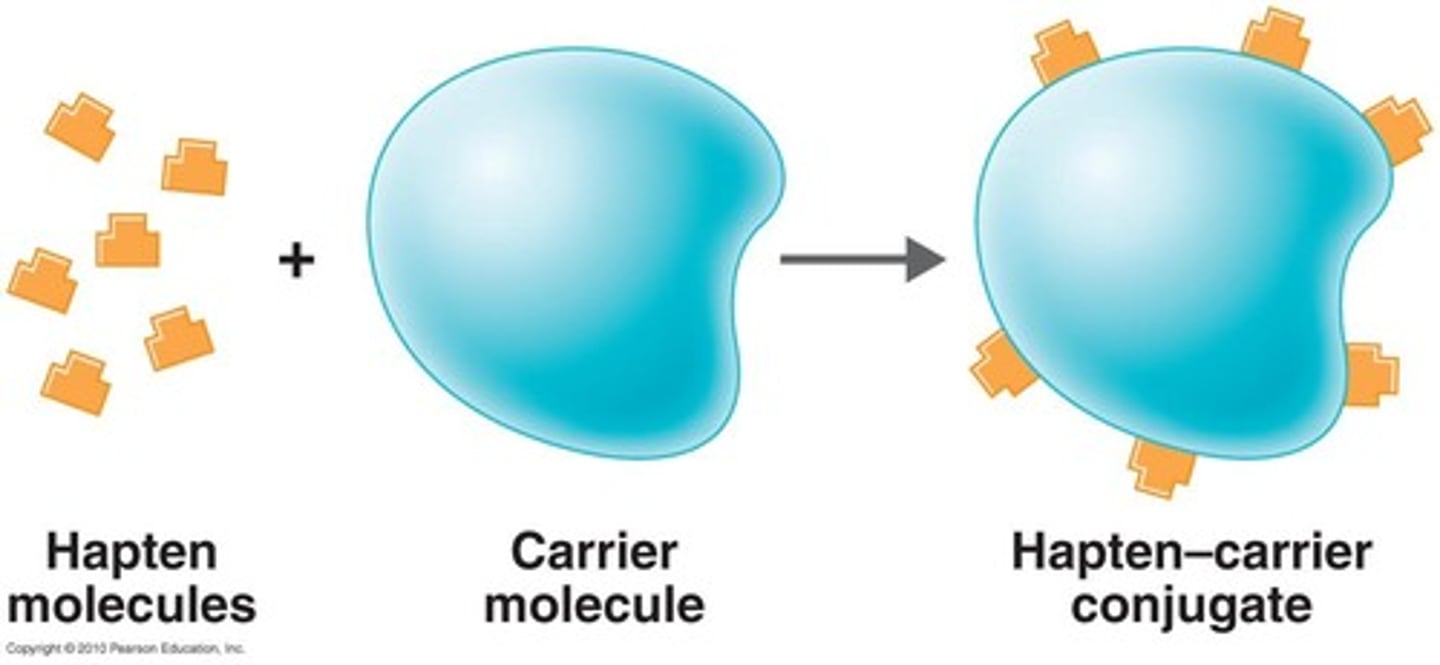
CD4
Marker found on all helper T cells
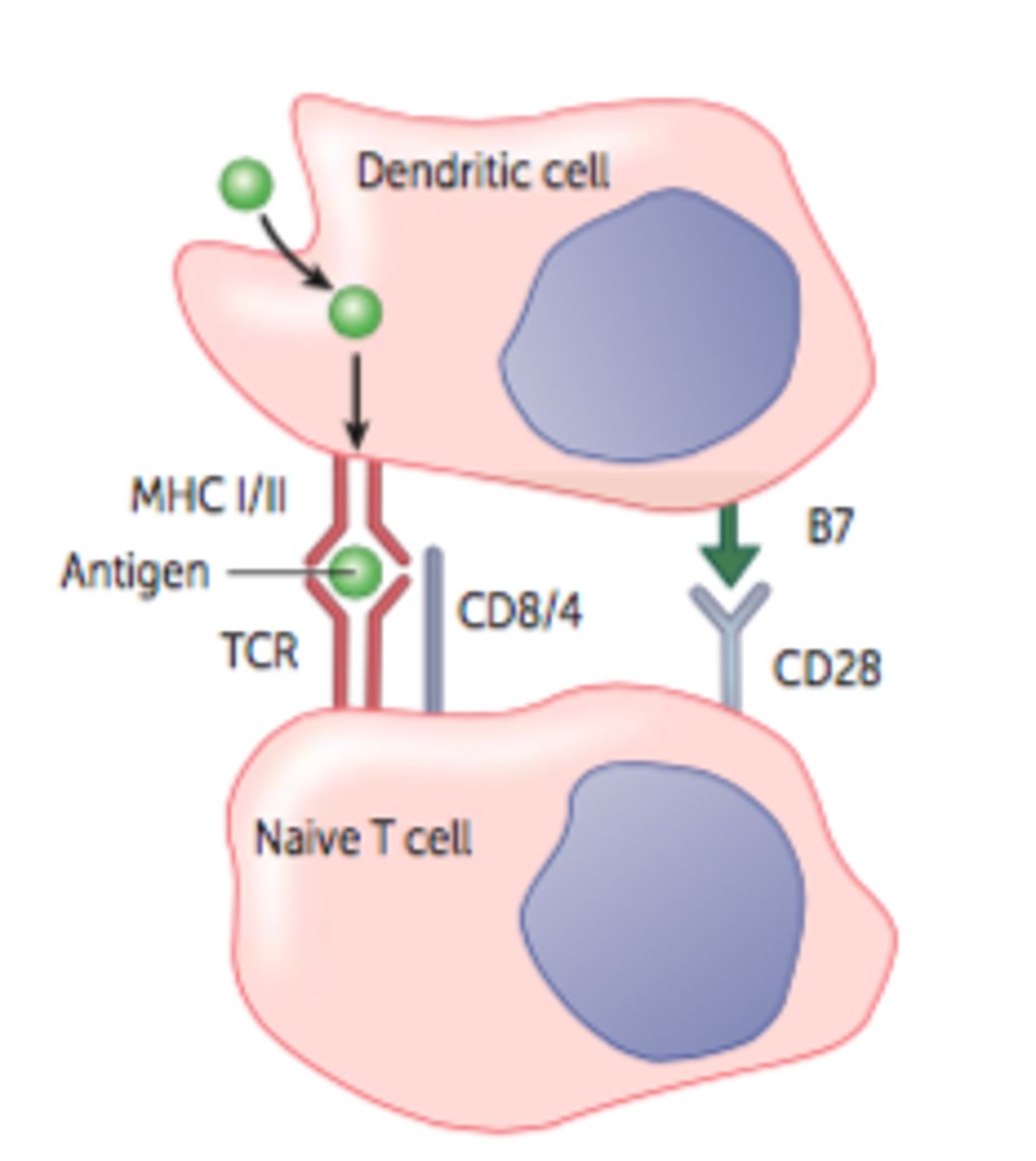
CD8
Marker found on all cytotoxic T cells
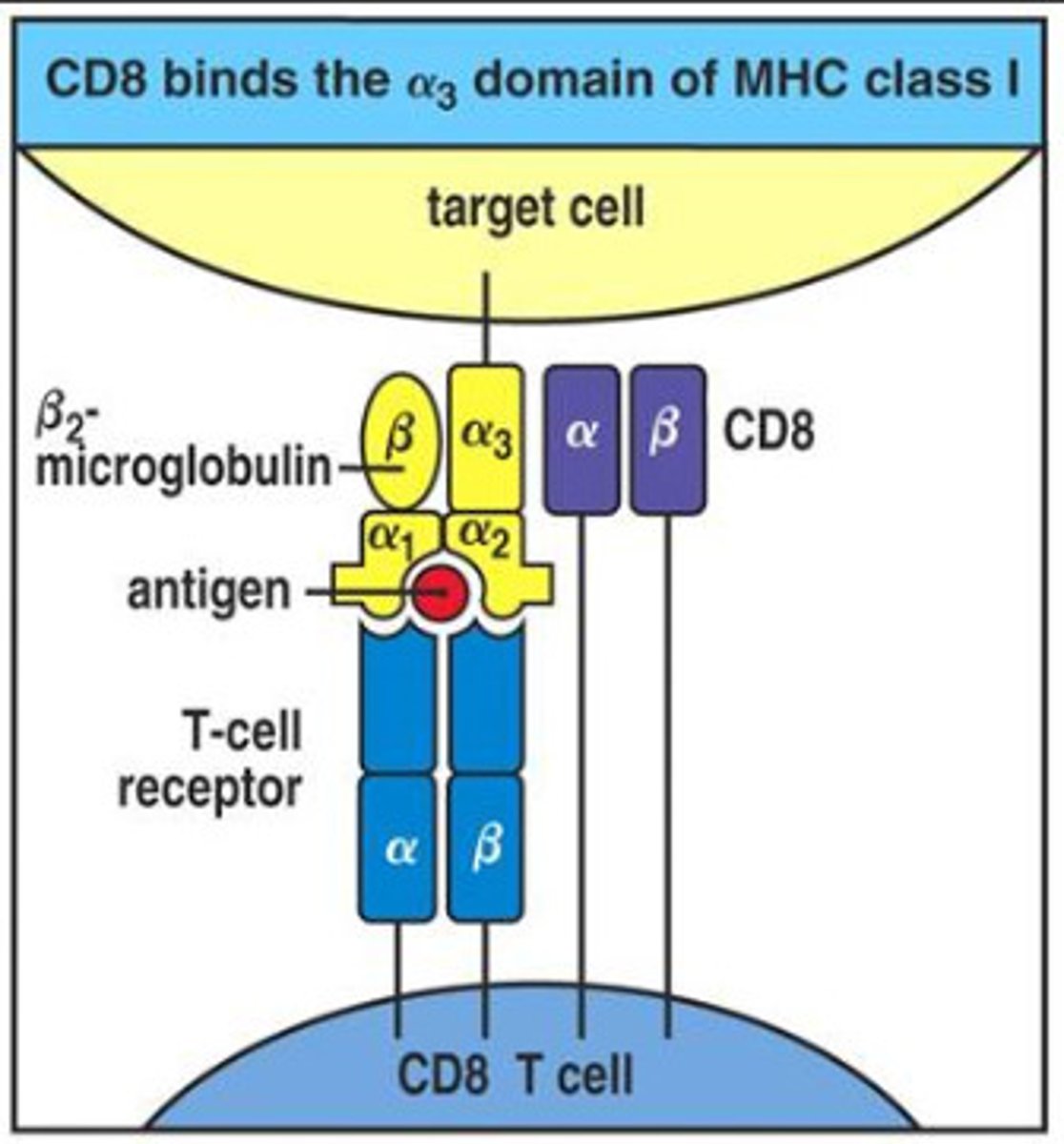
cell mediated immunity
type of immunity produced by T cells that attack infected or abnormal body cells
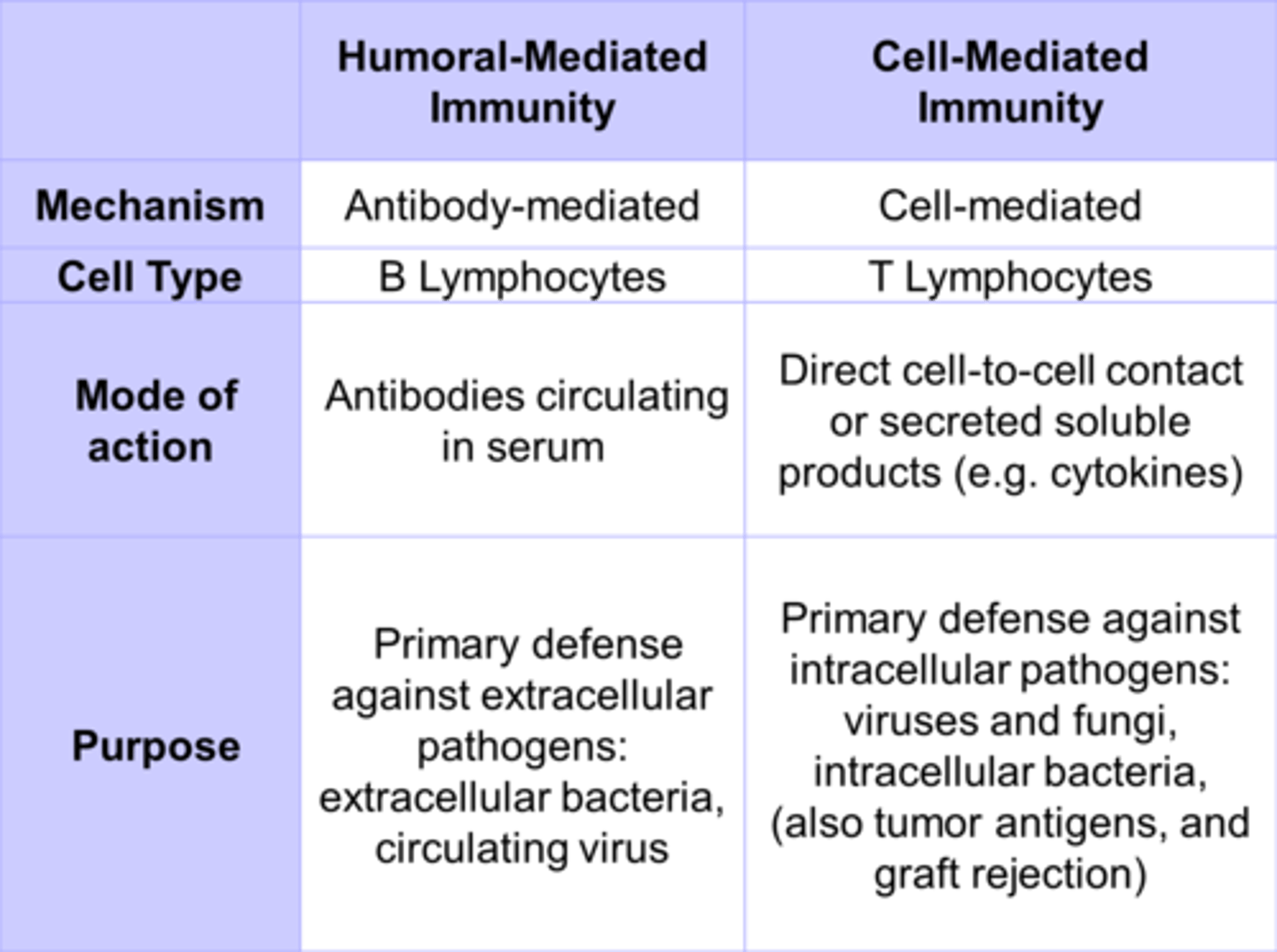
class switching
ability of B cells to change the class of antibody they produce without altering the specificity for antigen - they alter the Fc region to alter the immunoglobulin class
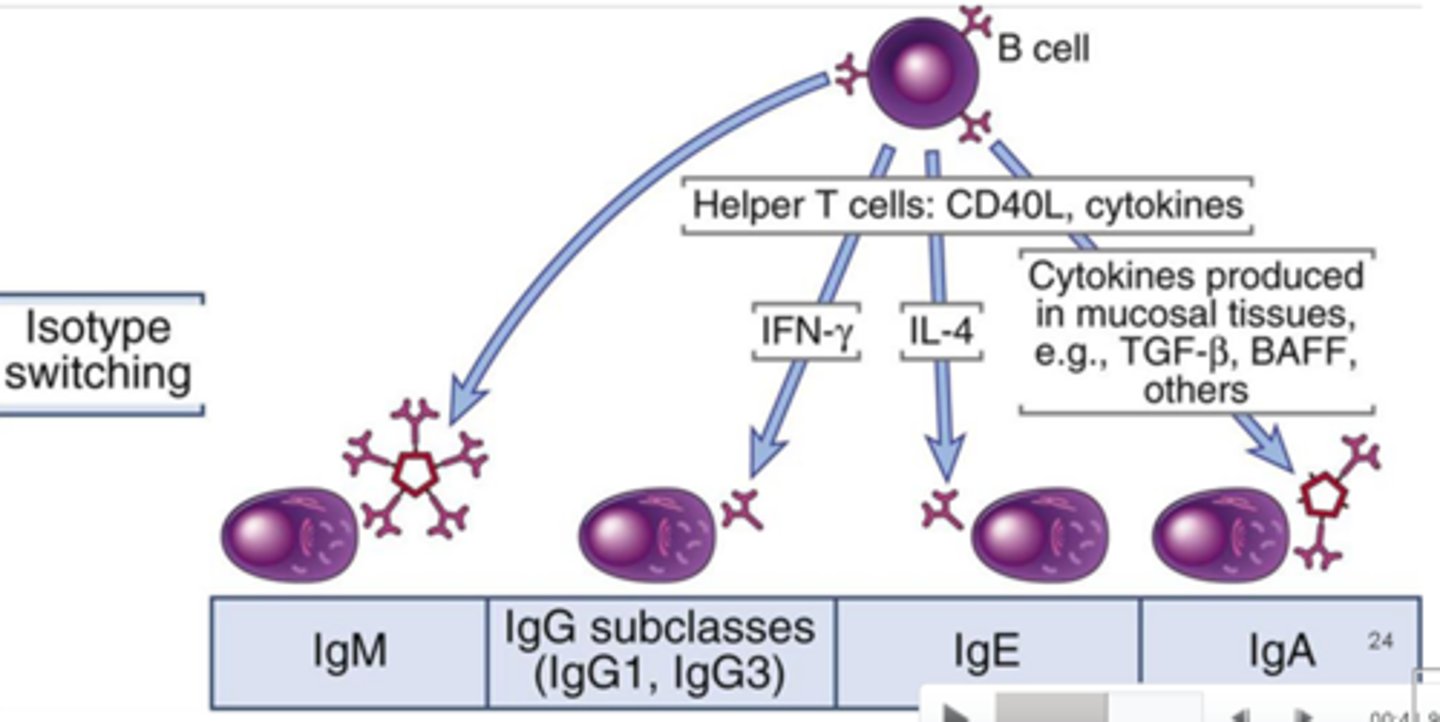
clonal selection
The process by which an antigen selectively binds to and activates only those lymphocytes bearing receptors specific for the antigen. The selected lymphocytes proliferate and differentiate into a clone of effector cells and a clone of memory cells specific for the stimulating antigen.
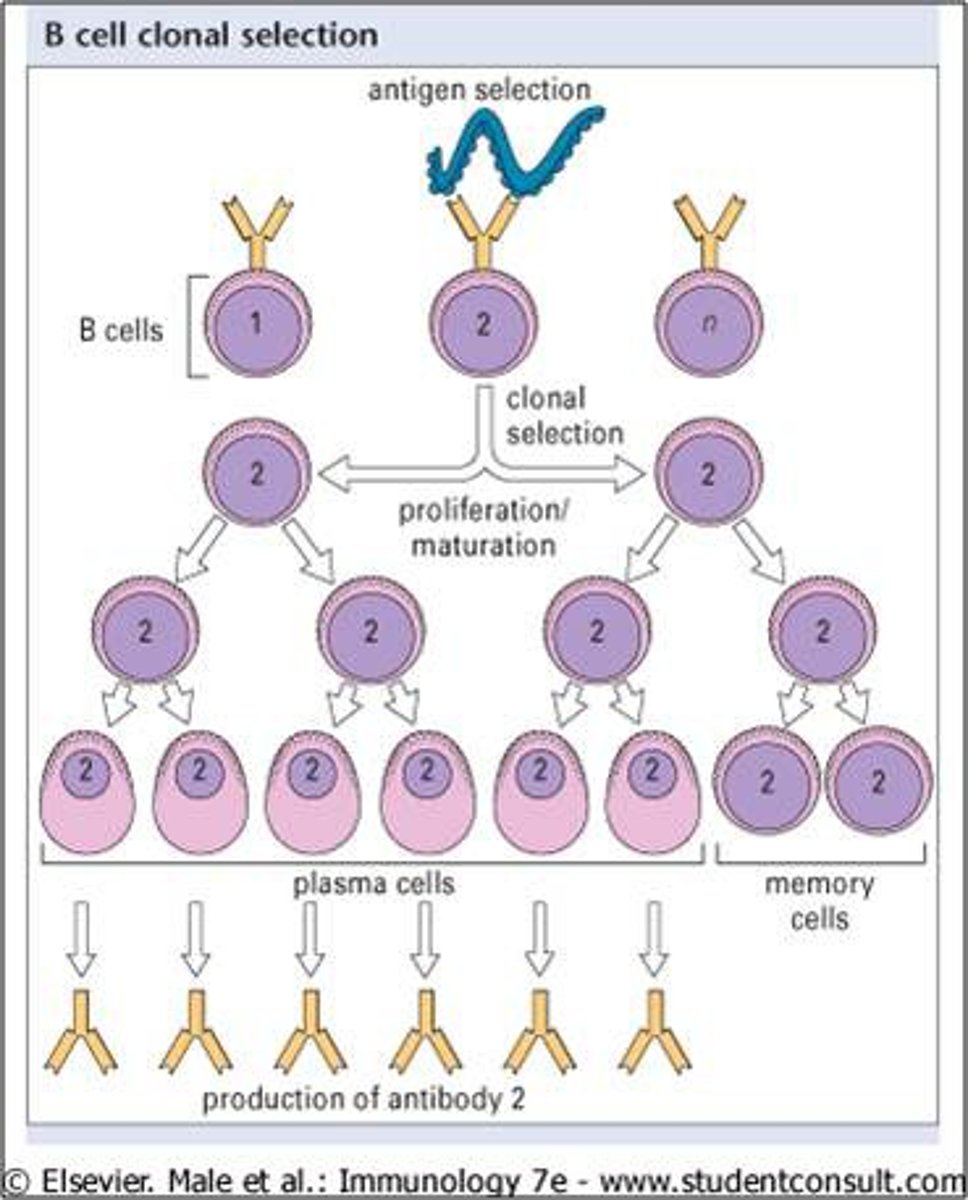
constant region (Ig)
Sections of antibodies (no gene arrangement) of heavy & light chains of antibodies. 5 diff isotypes on heavy chain, each with diff protein structure and effector function(isotype switching to change Ab class w/o changing Ag specificity):
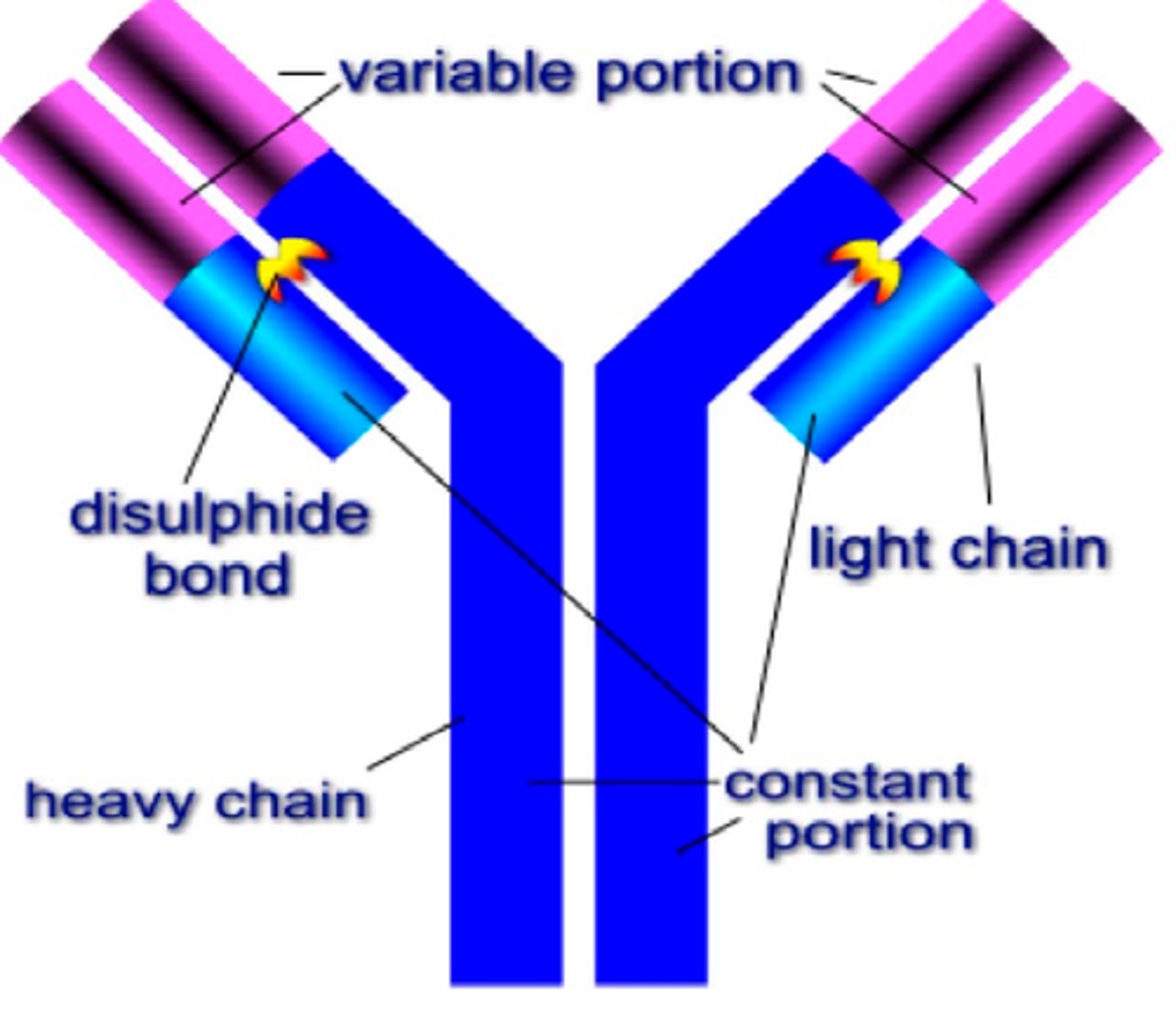
cytotoxic T cells
T cells, often called killer cells because of their capability to kill invading organisms.
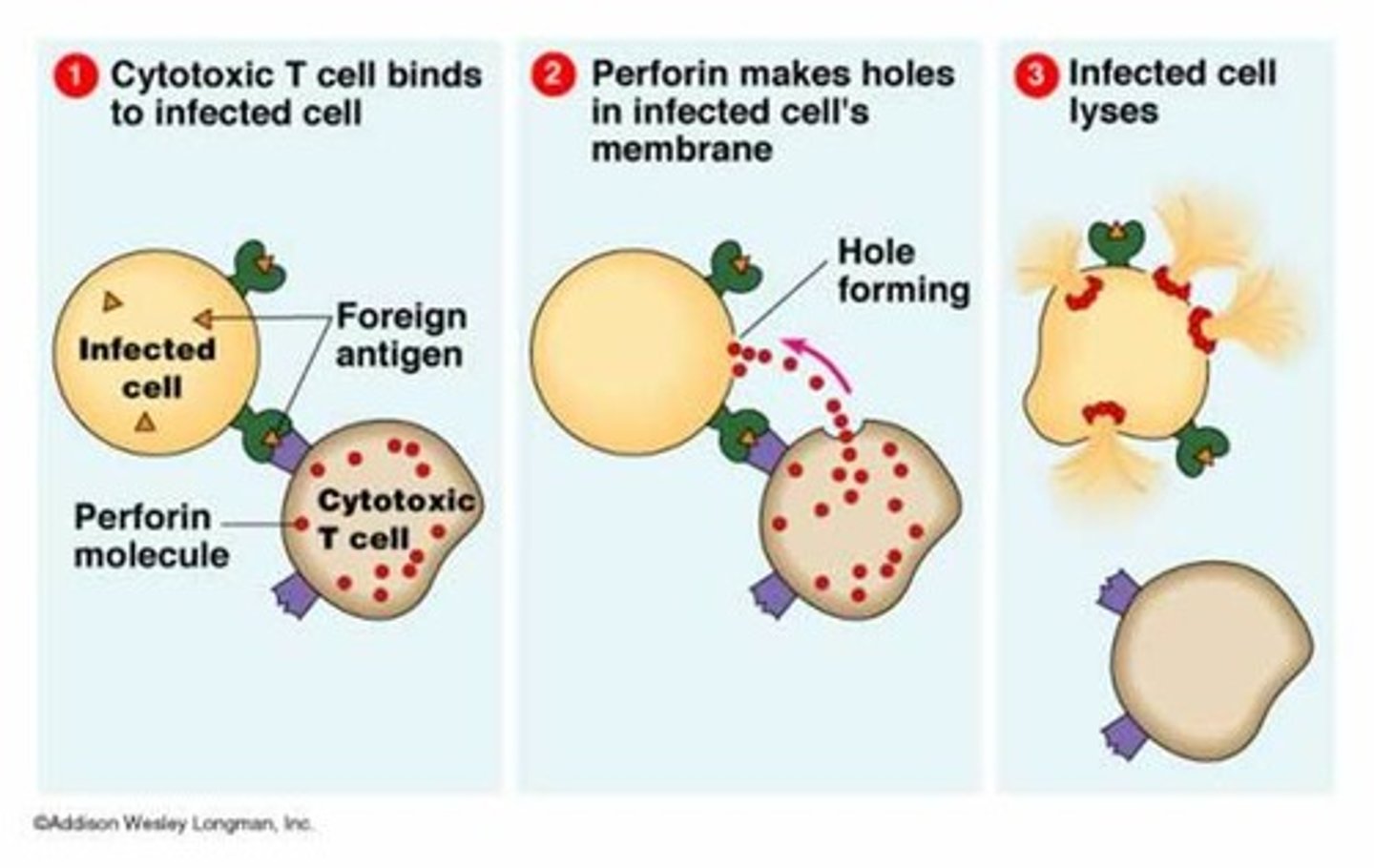
effector
short-lived cells that take effect immediately against the antigen and any pathogens producing that antigen
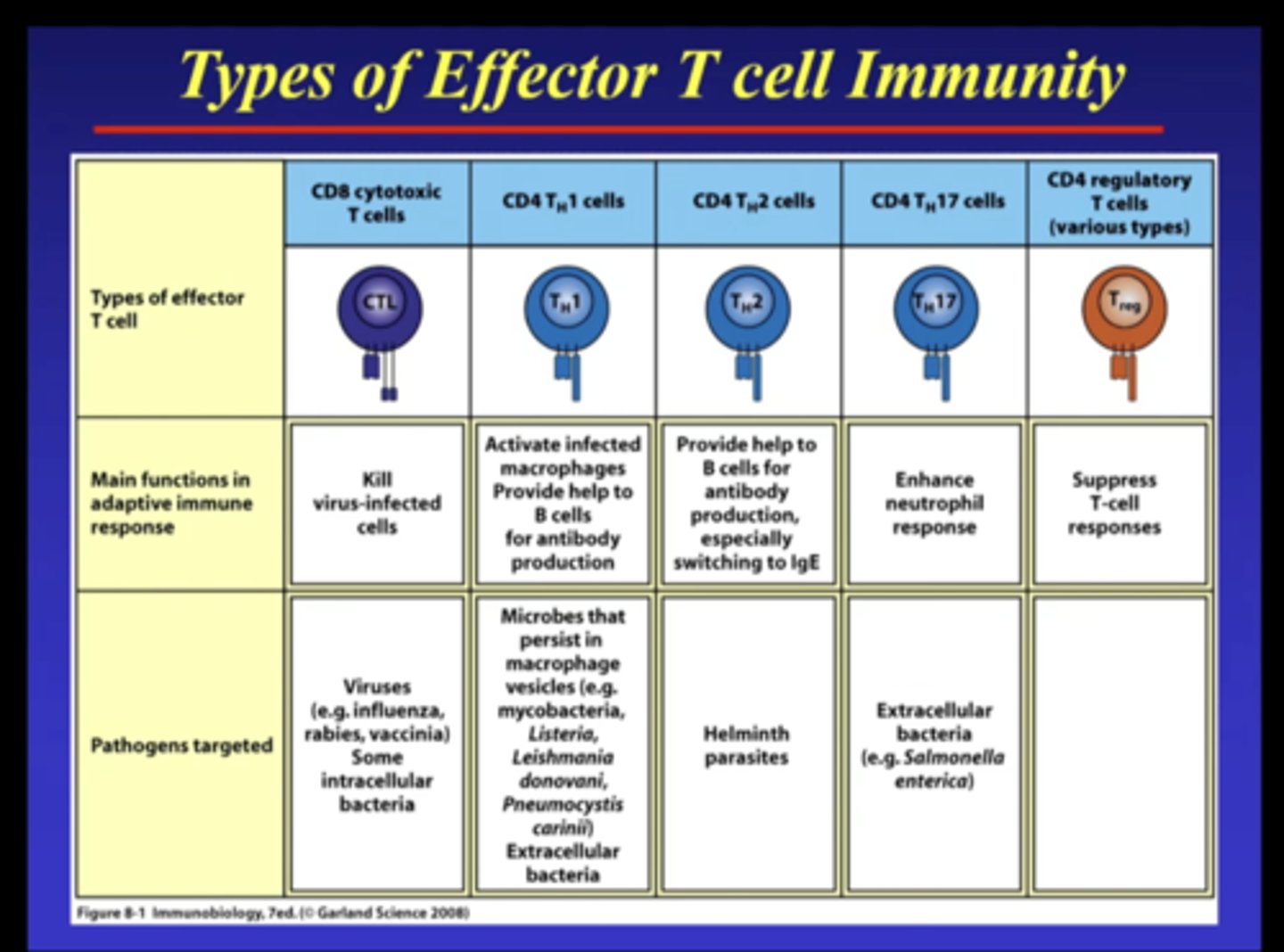
epitope
A small, accessible region of an antigen to which an antigen receptor or antibody binds; also called an antigenic determinant.
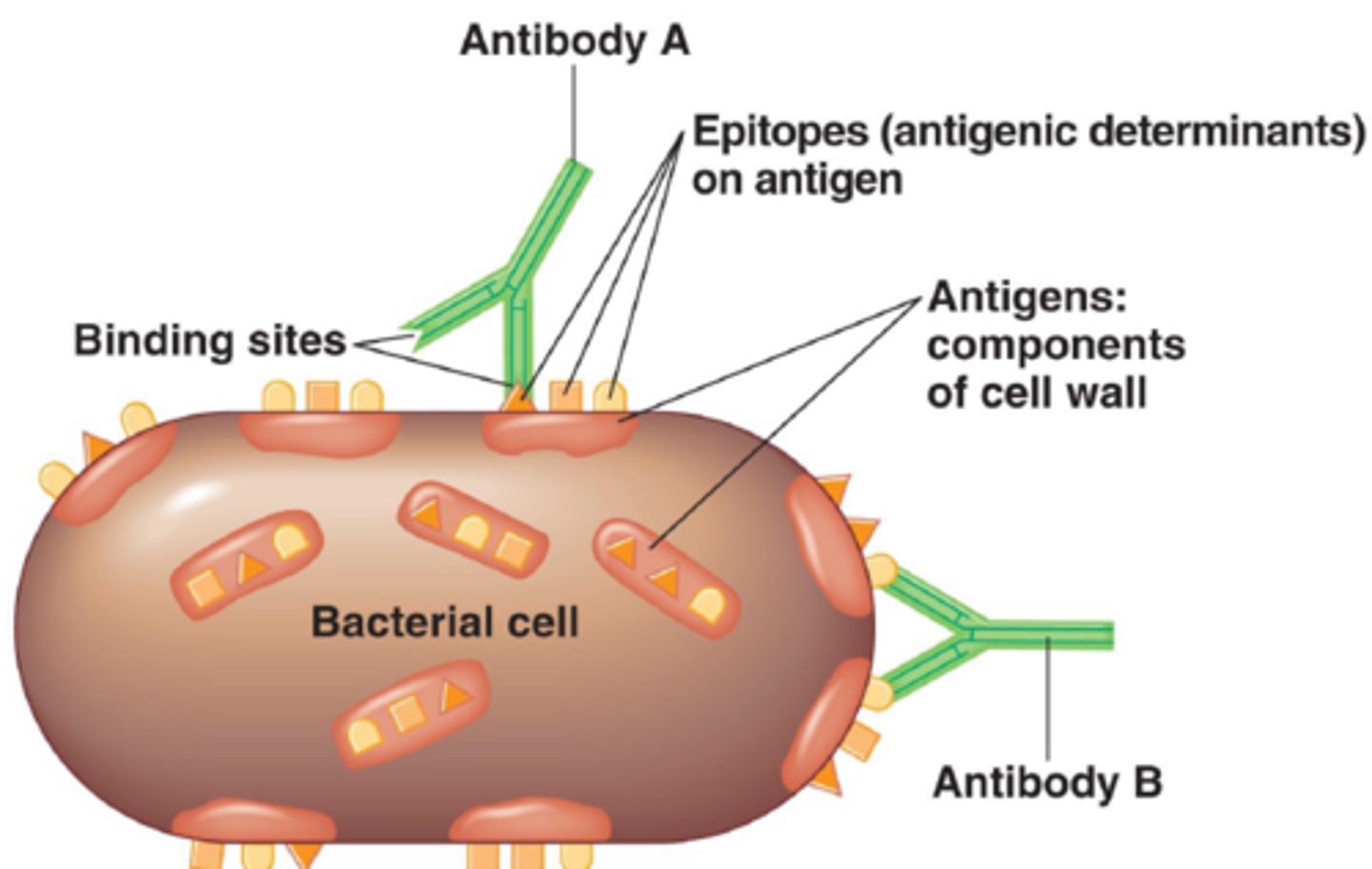
Fab region
arms of an antibody, variable region that recognizes specific epitope, bind to antigens
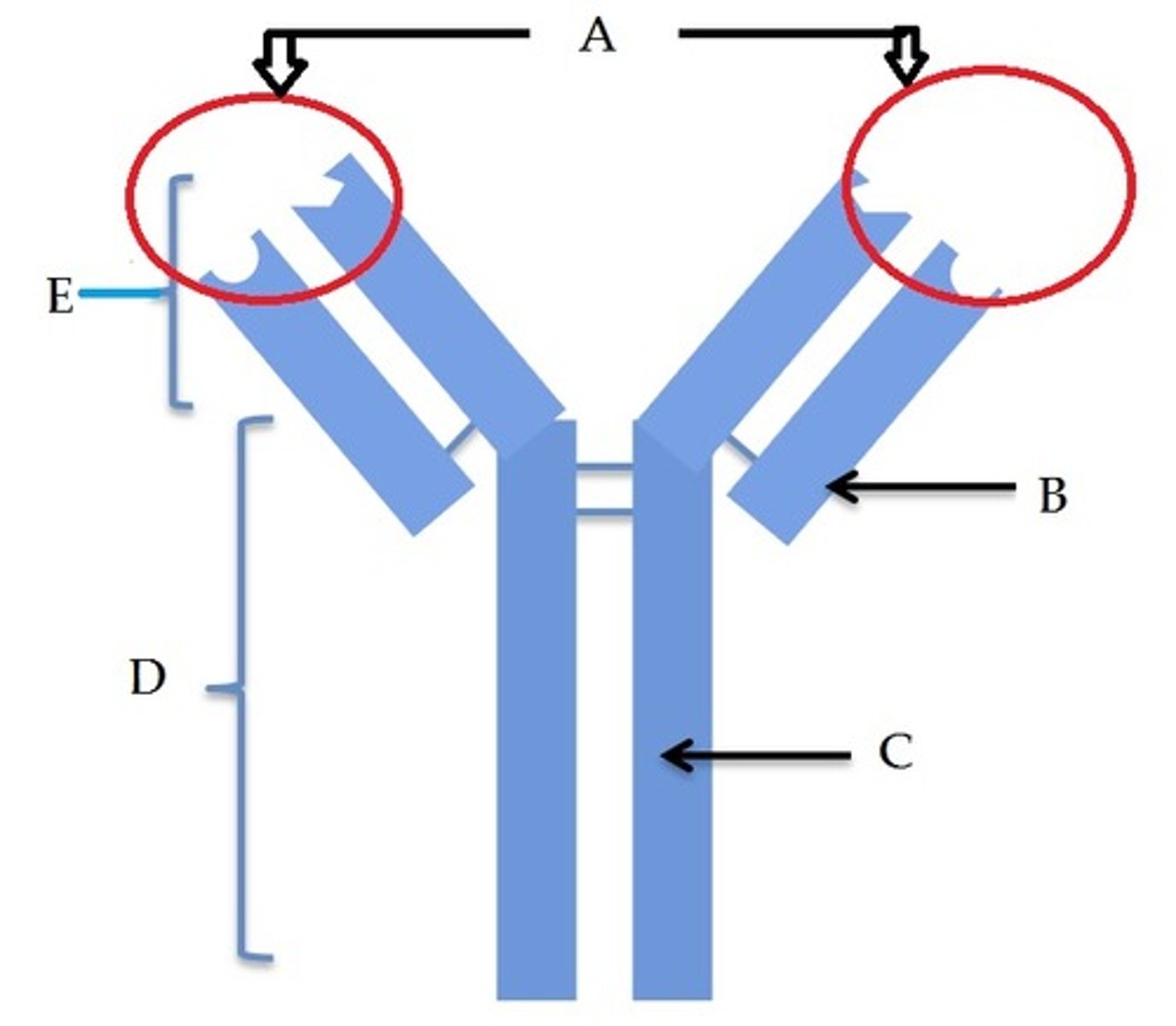
Fc region
in an antibody molecule, the site where the two termini of the heavy chains come together; many cells have receptors for this portion of the antibody, adding functionality to these molecules
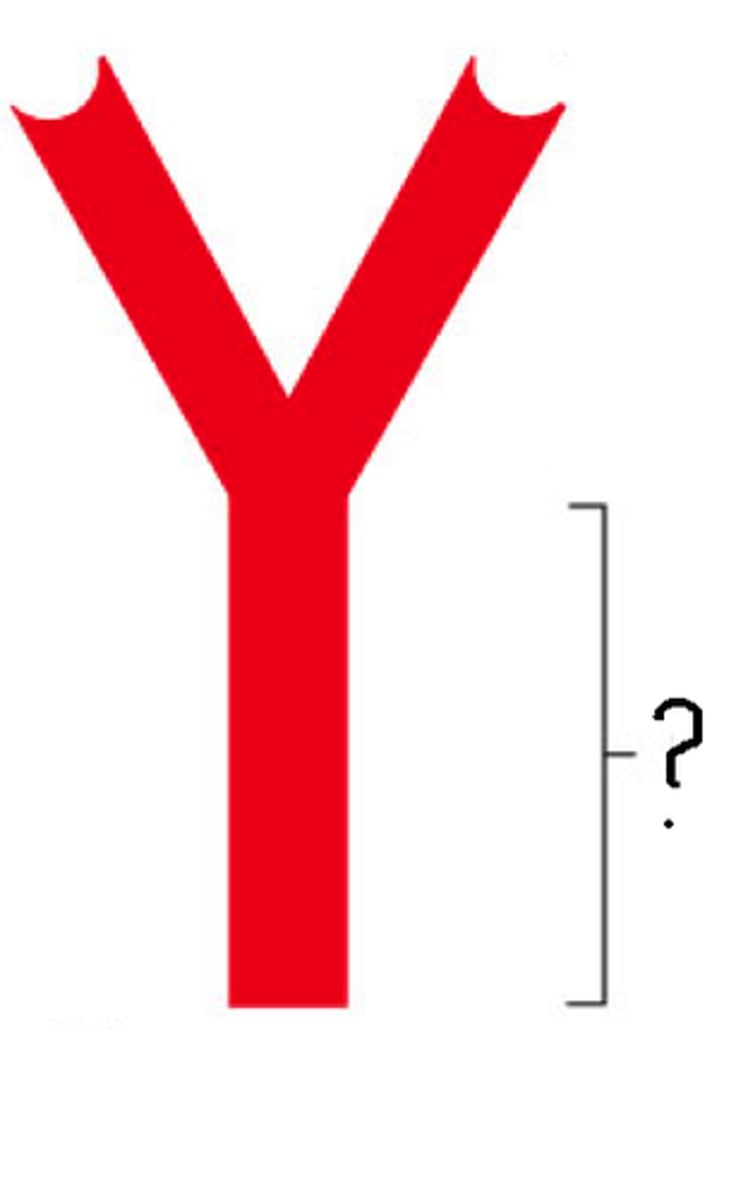
hapten
small molecule that has to bind to a larger molecule to form an antigen
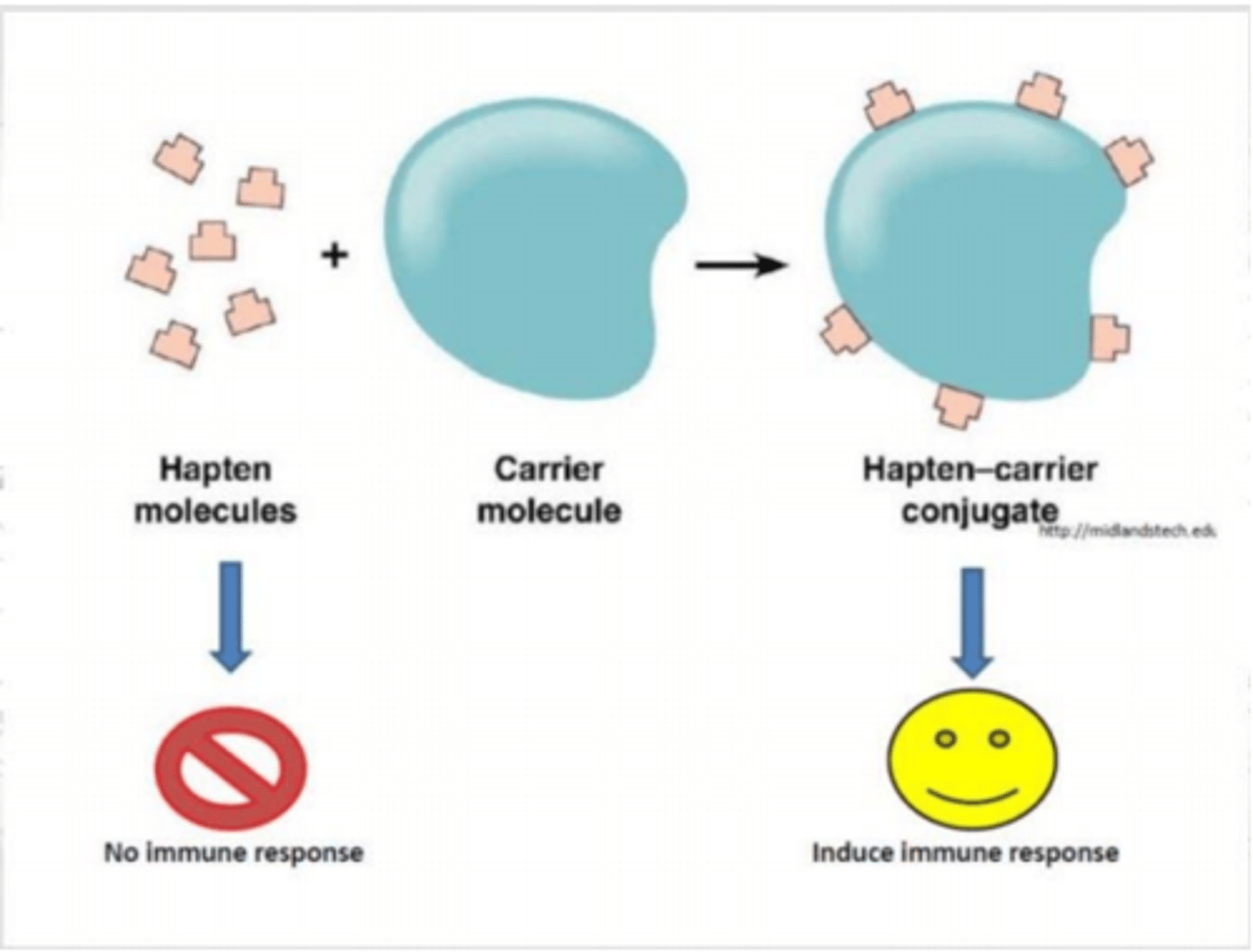
helper T cells
T cells that help the immune system by increasing the activity of killer cells, activating B cells, and stimulating the suppressor T cells
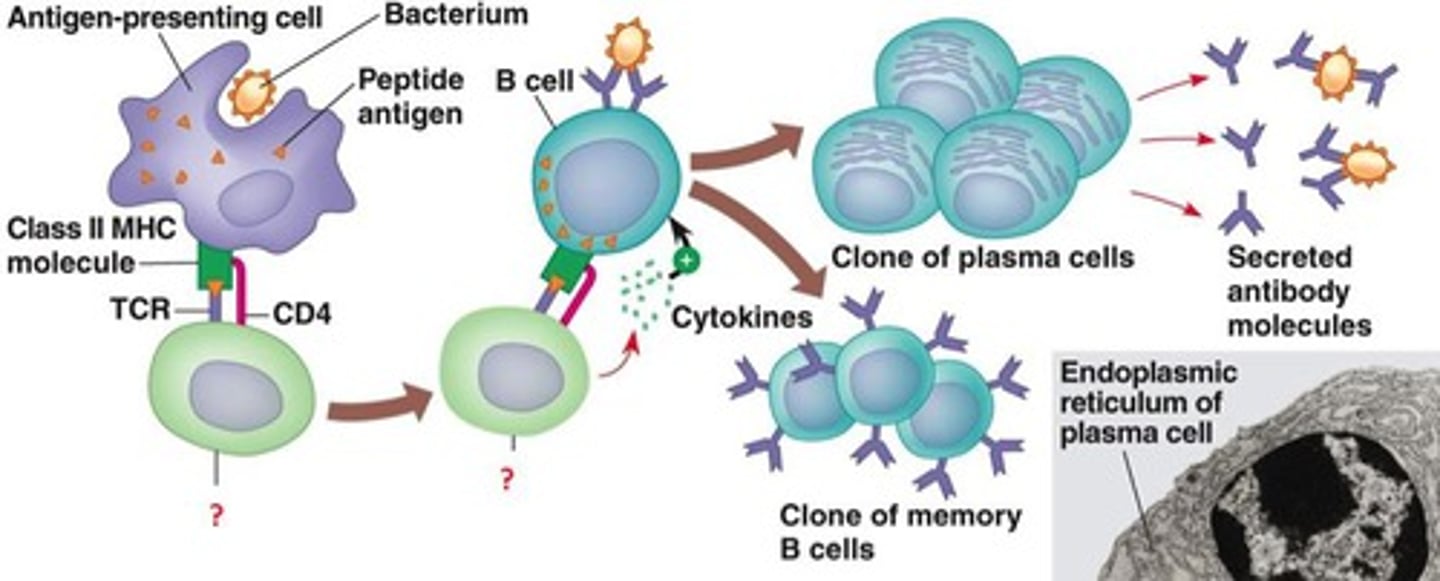
humoral immunity
specific immunity produced by B cells that produce antibodies that circulate in body fluids
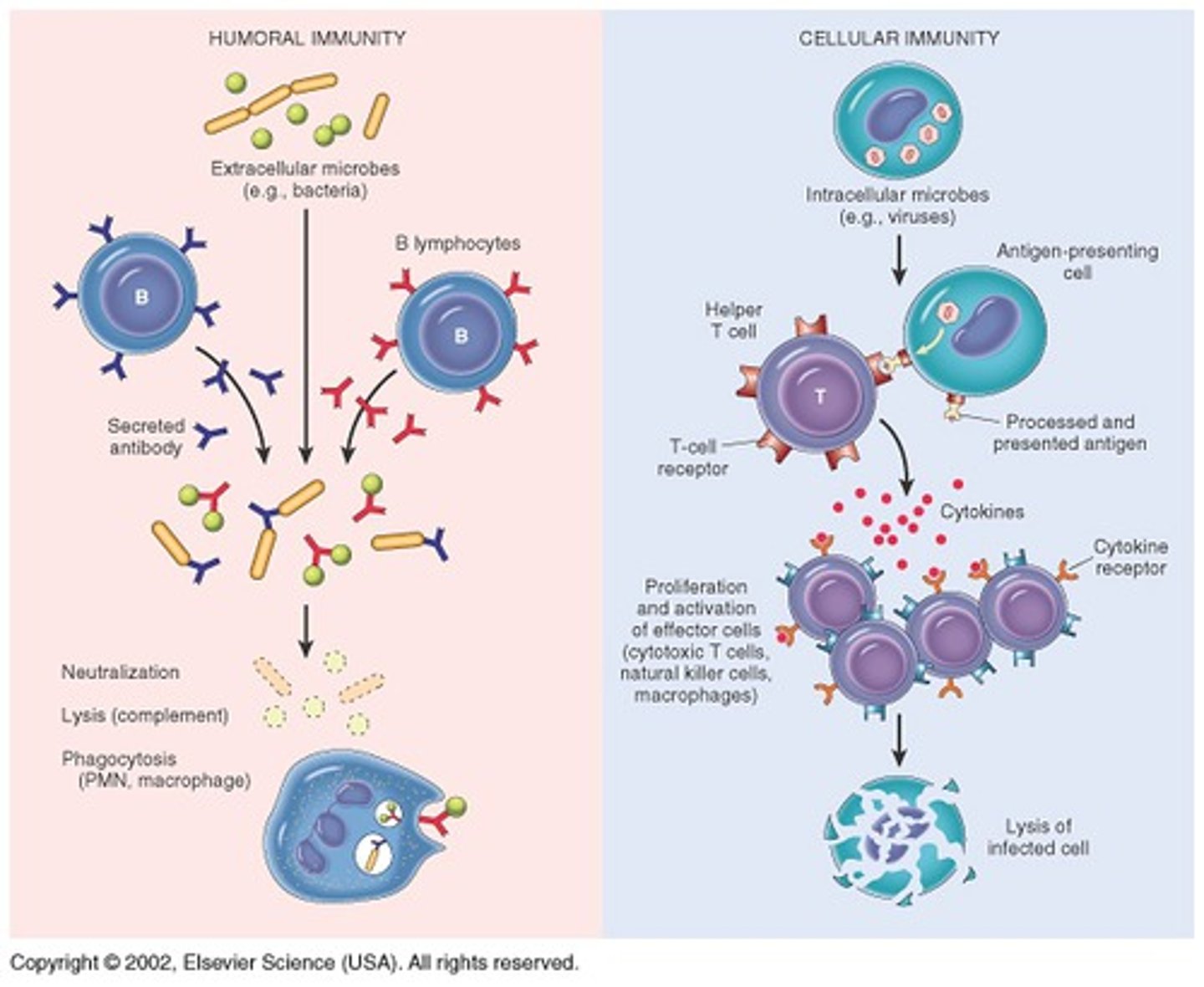
IgA antibodies
dimer antibody ~10% of serum antibodies, found on mucosal antibodies
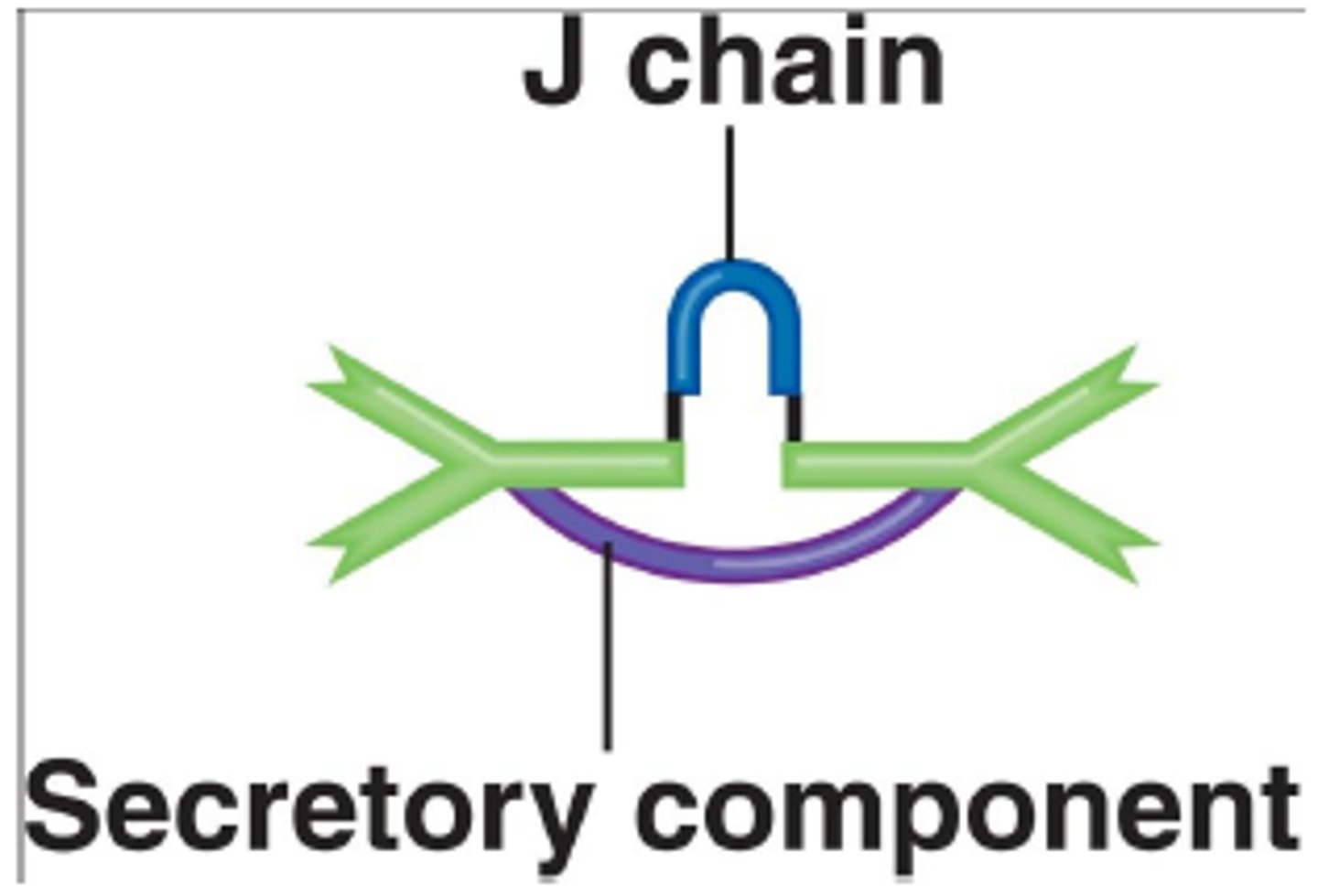
IgE antibodies
Monomer that bind to mast cells and basophils and are involved in allergic reactions (histamine release)
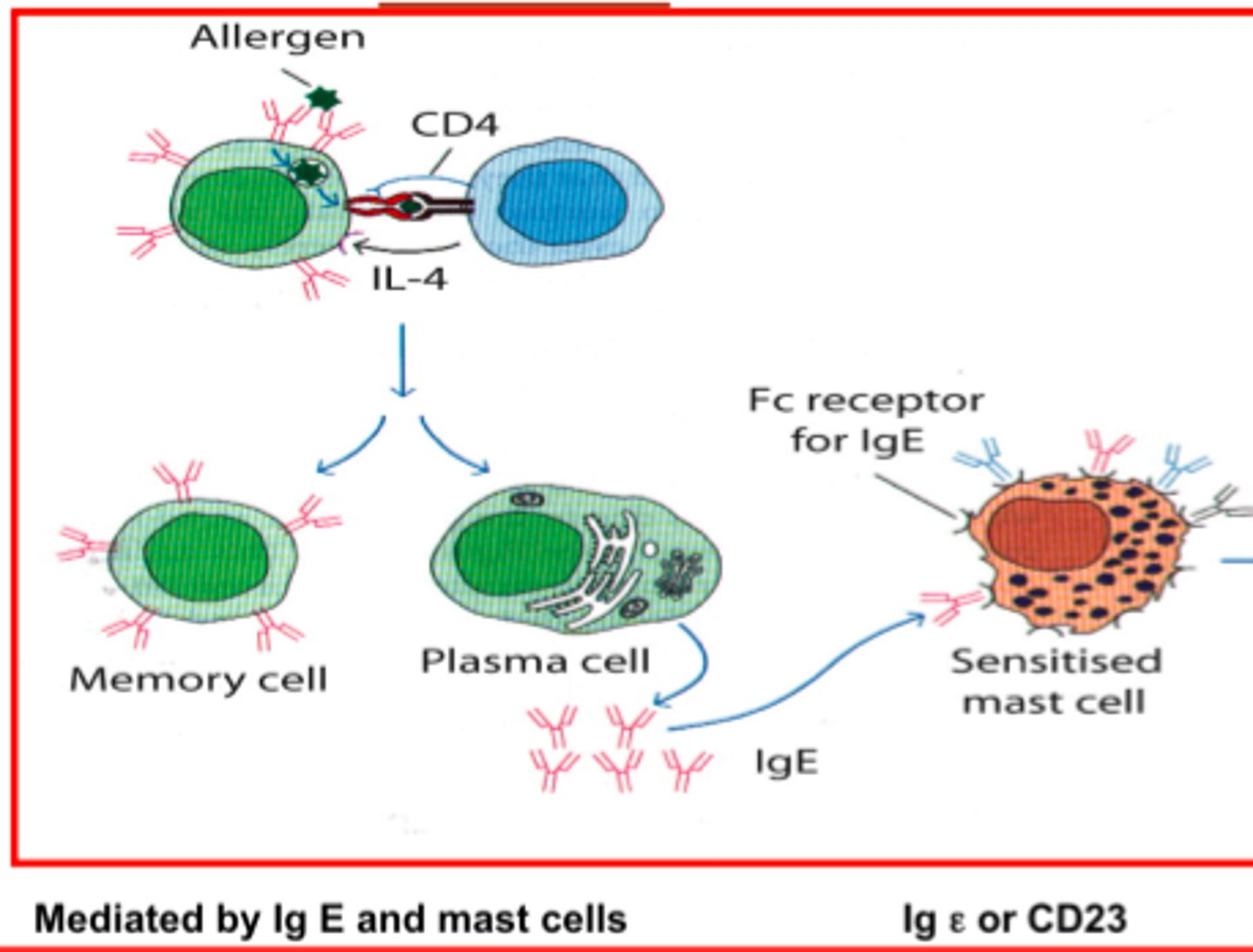
IgG
most abundant antibody in circulation - memory response
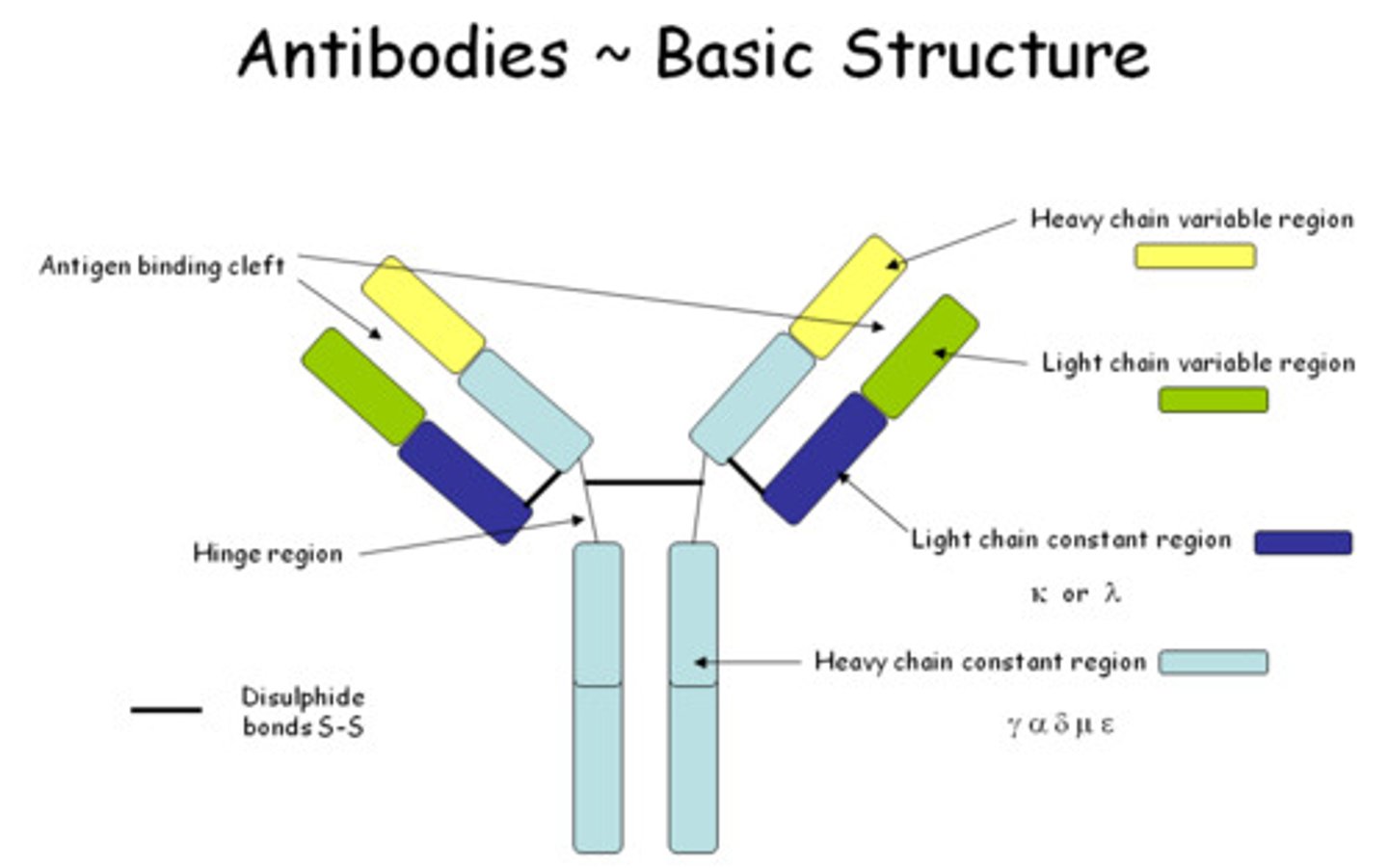
IgM
first antibody produced, pentamer (primary response)
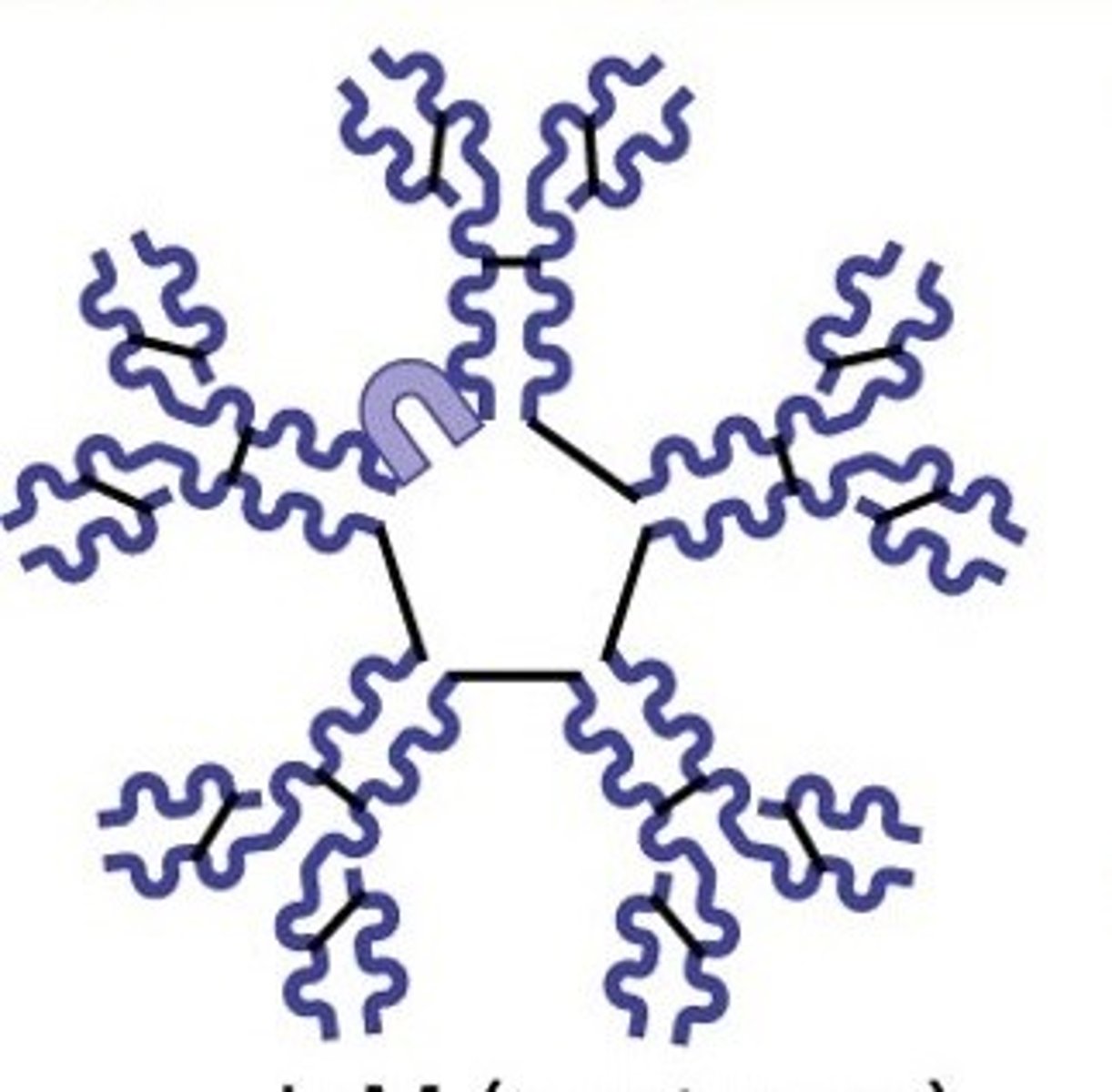
IgD
antibodly that stays bound to B cells (used as a B cell receptor)
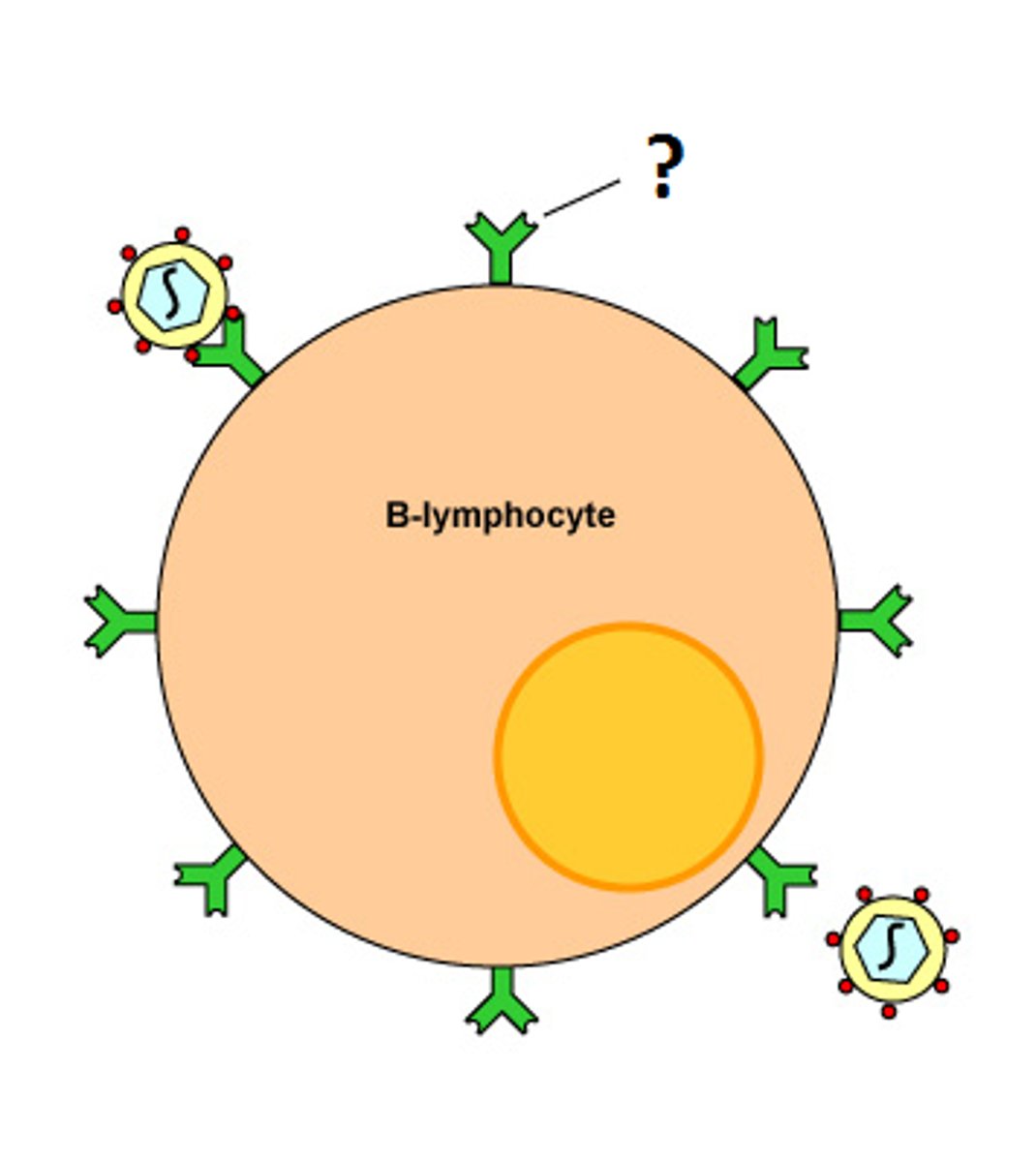
MHC I
molecules found on every body cell that presents antigen; signals cytotoxic T (CD8+) to destroy - these are found on all nucleated cells, and are the basis for tissue typing and rejection for organ transplantation
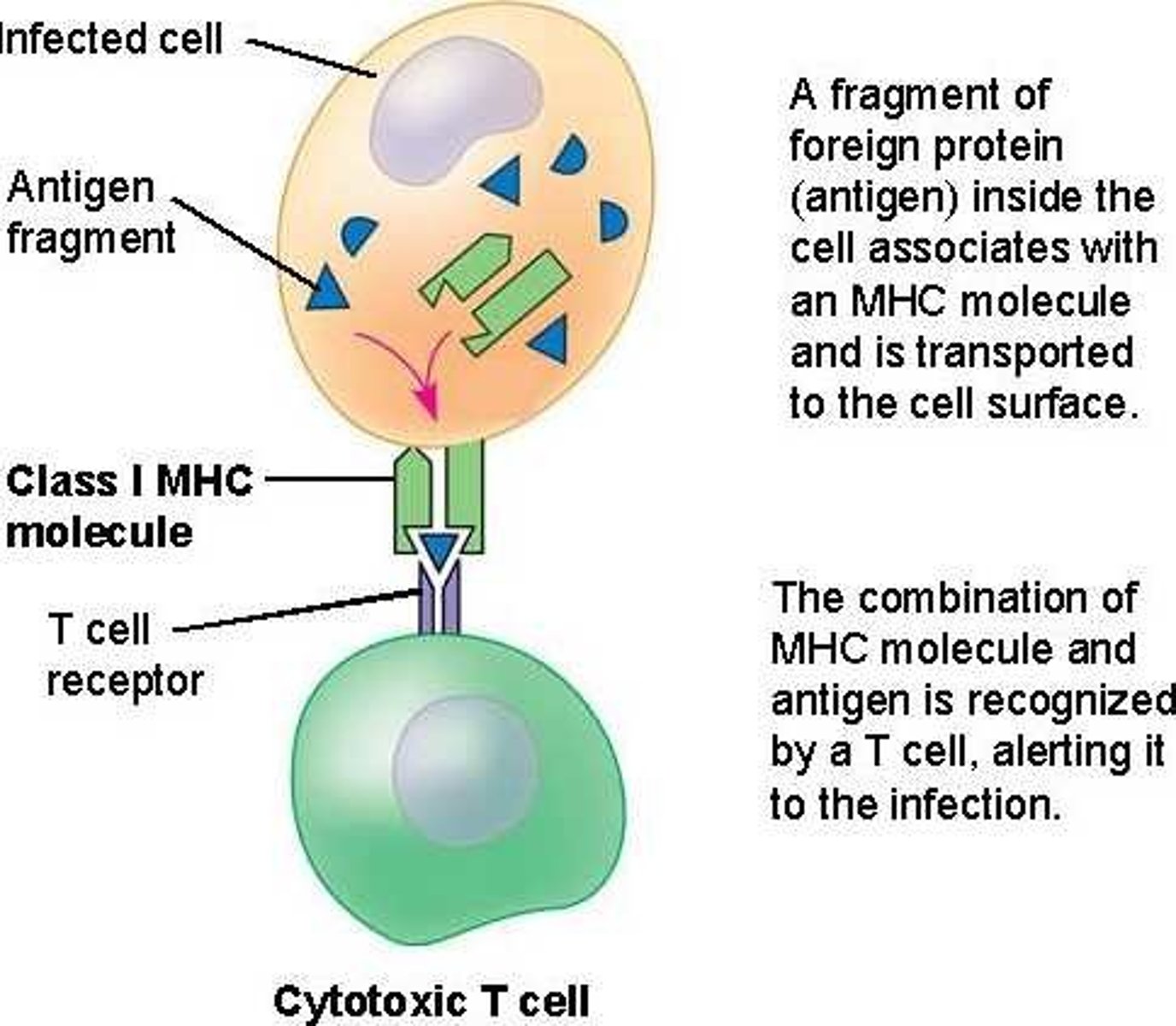
MHC II
proteins on the surface of B cells, dendritic cells, and macrophages for displaying the antigen that was internalized (phagocytosed) - present antigen to CD4+ T cells
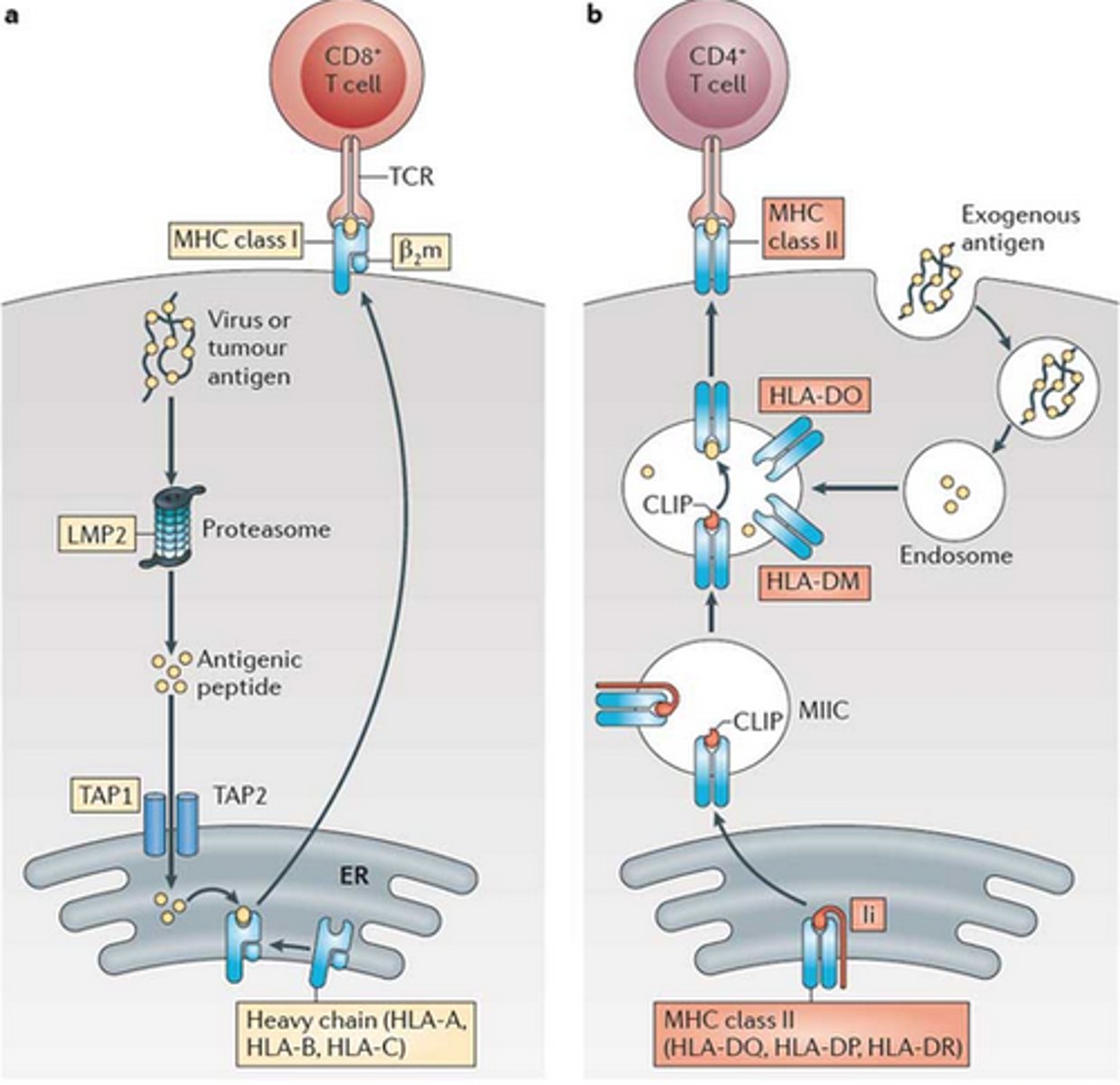
T-dependent antigen
an antigen that will stimulate the formation of antibodies only with the assistance of T helper cells
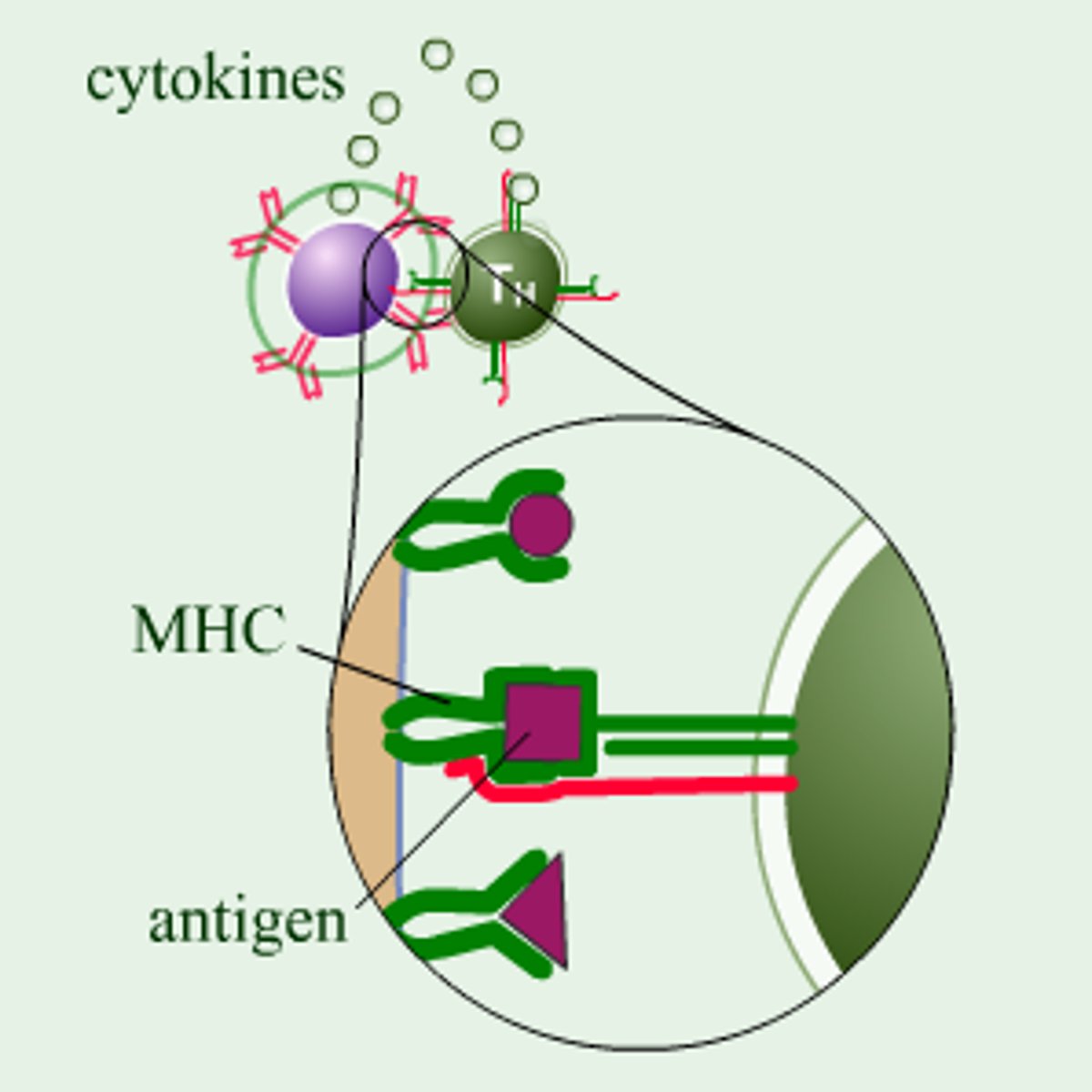
T-independent antigen
Stimulate the B cell without the help of T cells
Provoke a weak immune response, usually producing IgM
No memory cells generated
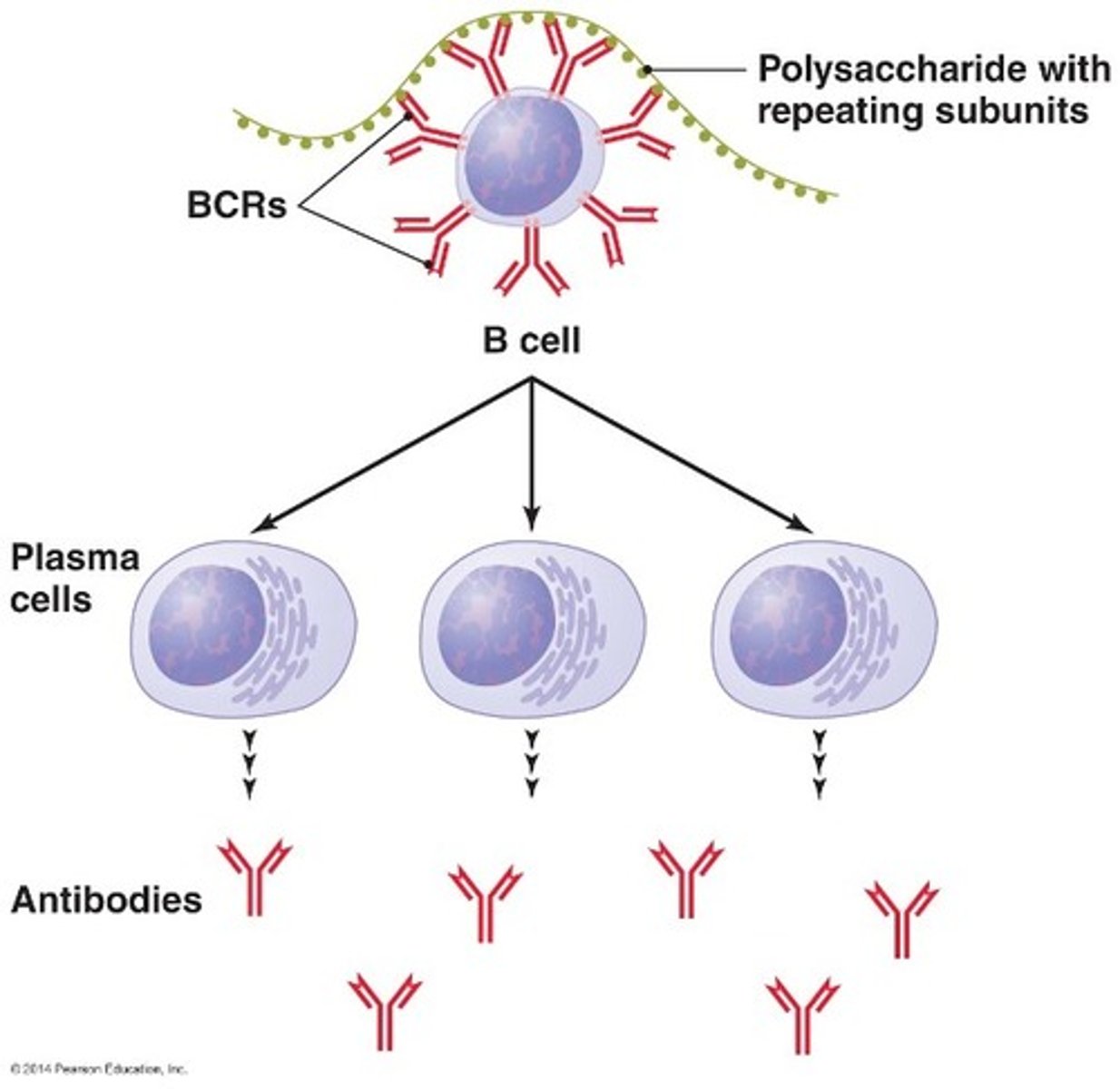
Treg
regulatory T cell (suppressor T cell) that dampen an immune response
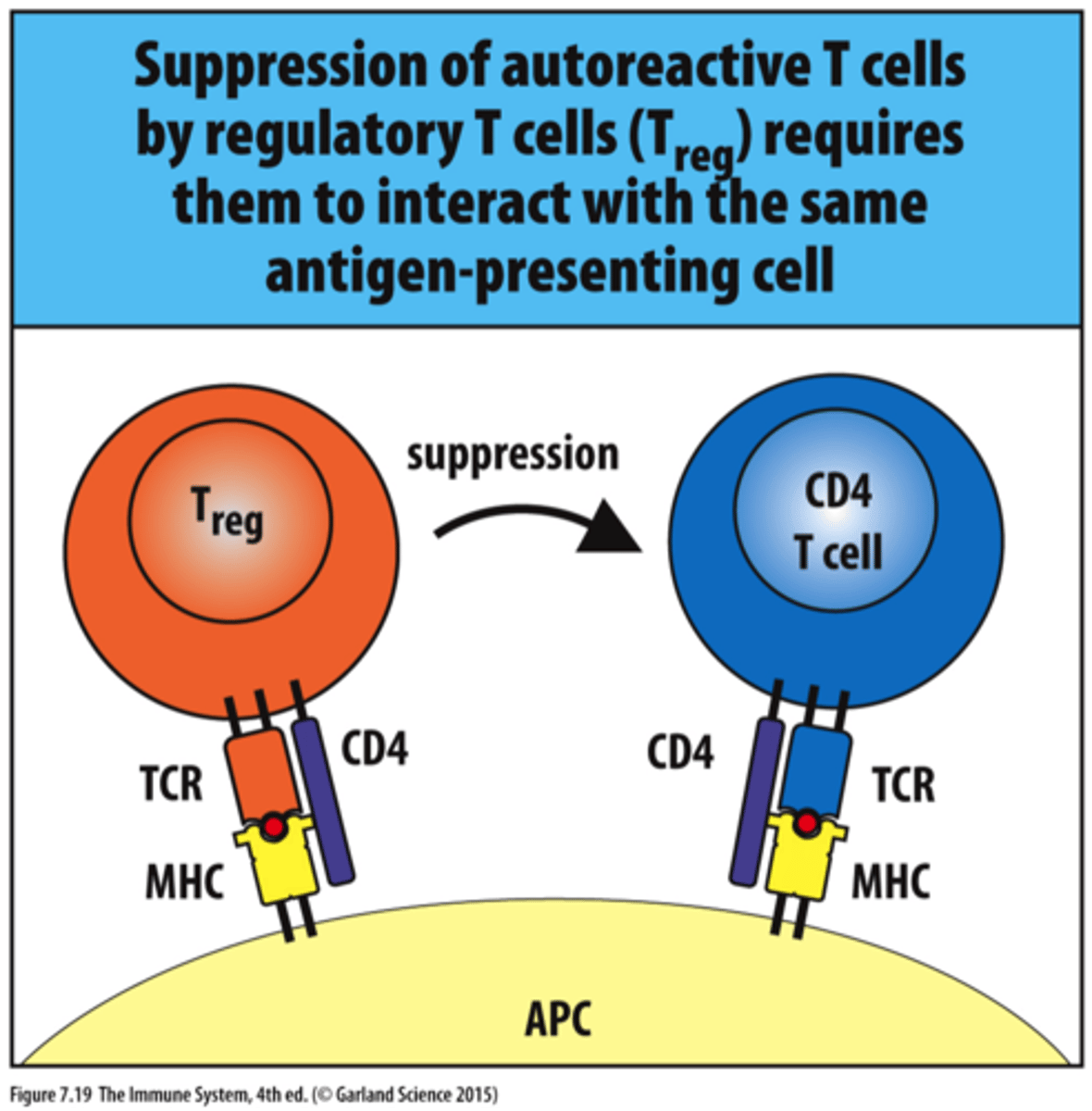
TH17
T helper cells that act early in a response to stimulate the innate immune response
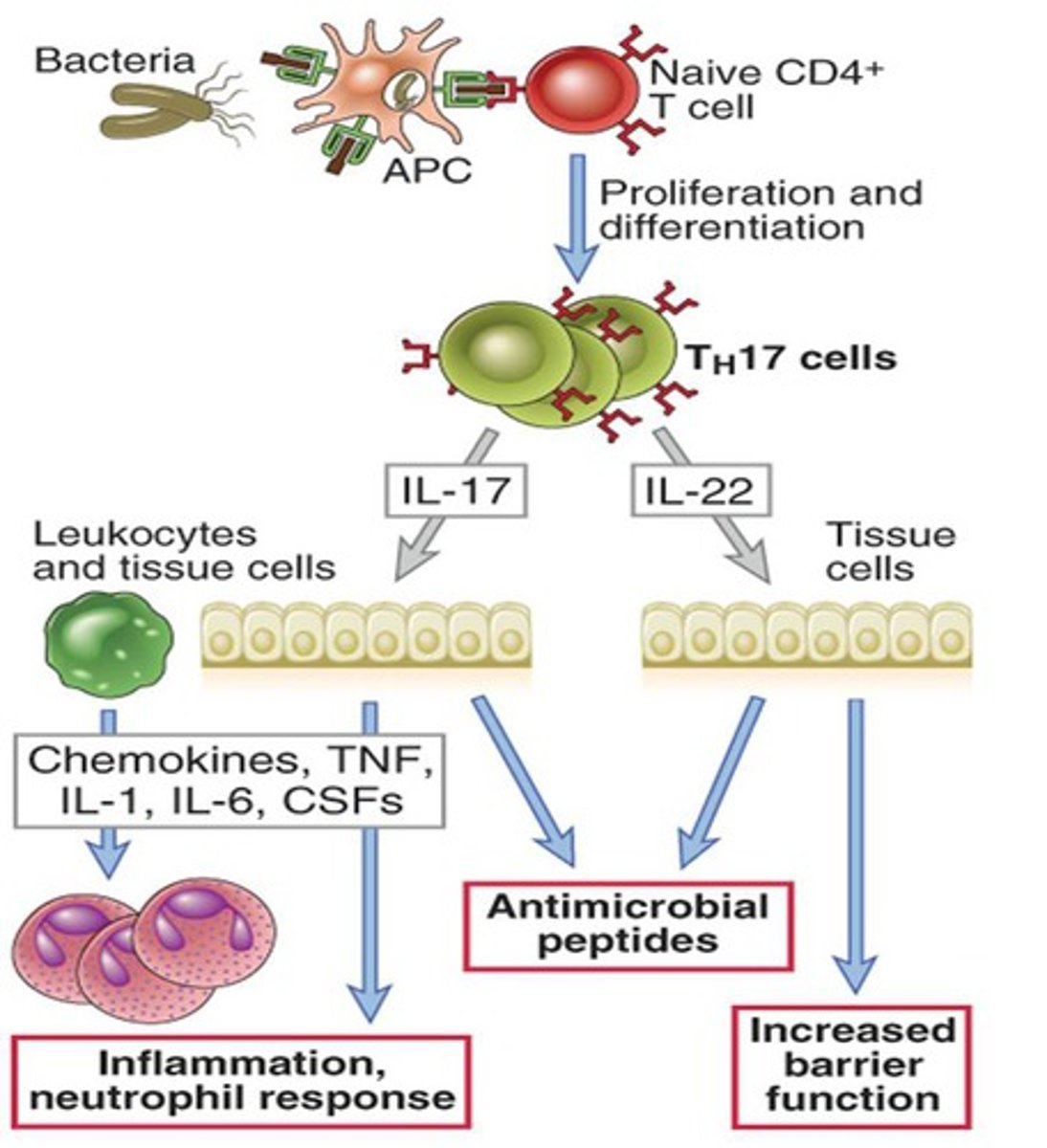
variable regions
part of body that combines with the antigen (made up of the variable region of the both heavy and light chains)
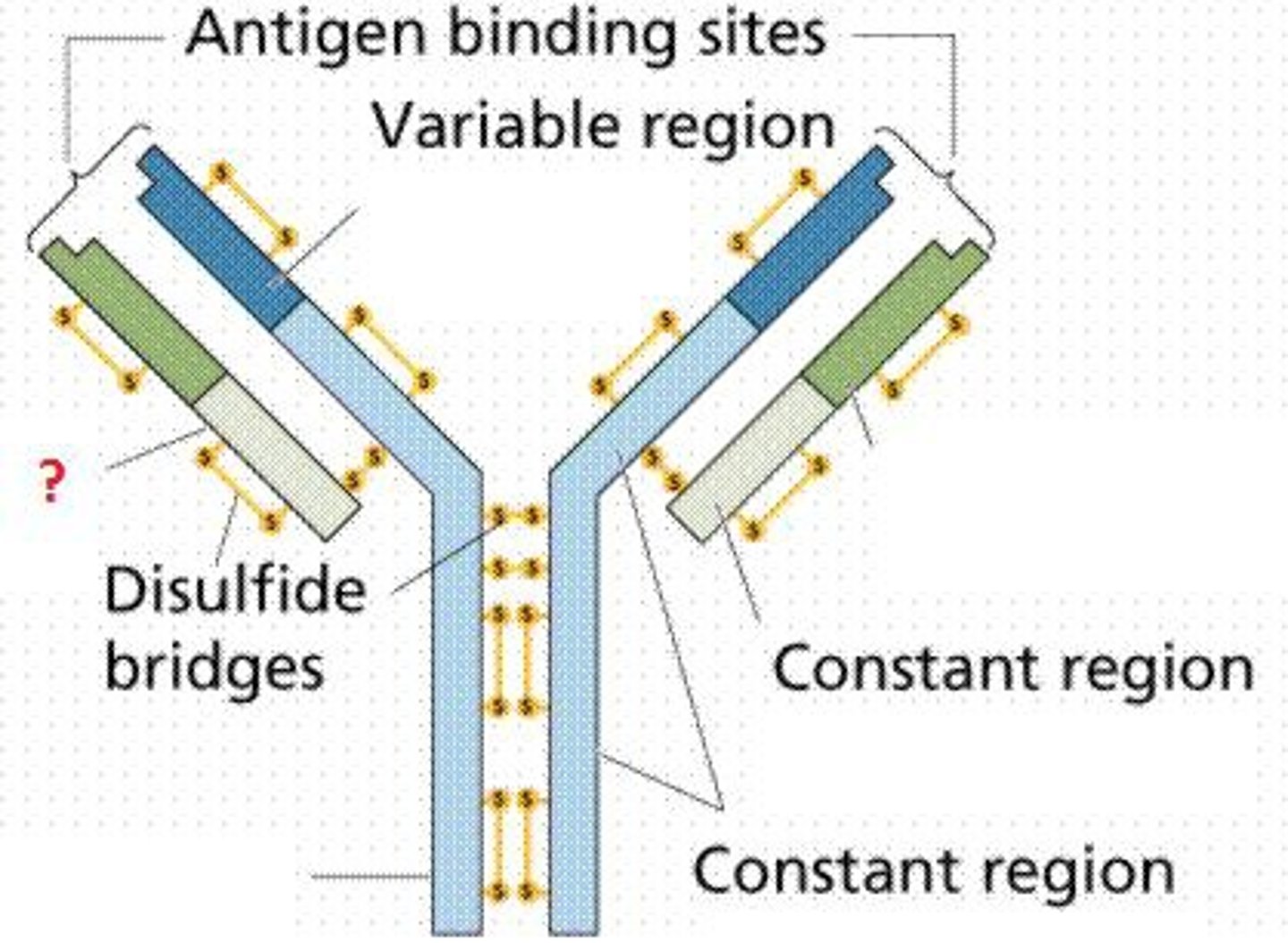
VDJ rearrangement
process that generates diversity of B cell and T cell receptors; the heavy chain (B cell) or beta chain (T cell) is rearranged first and then the light chain or alpha chains
